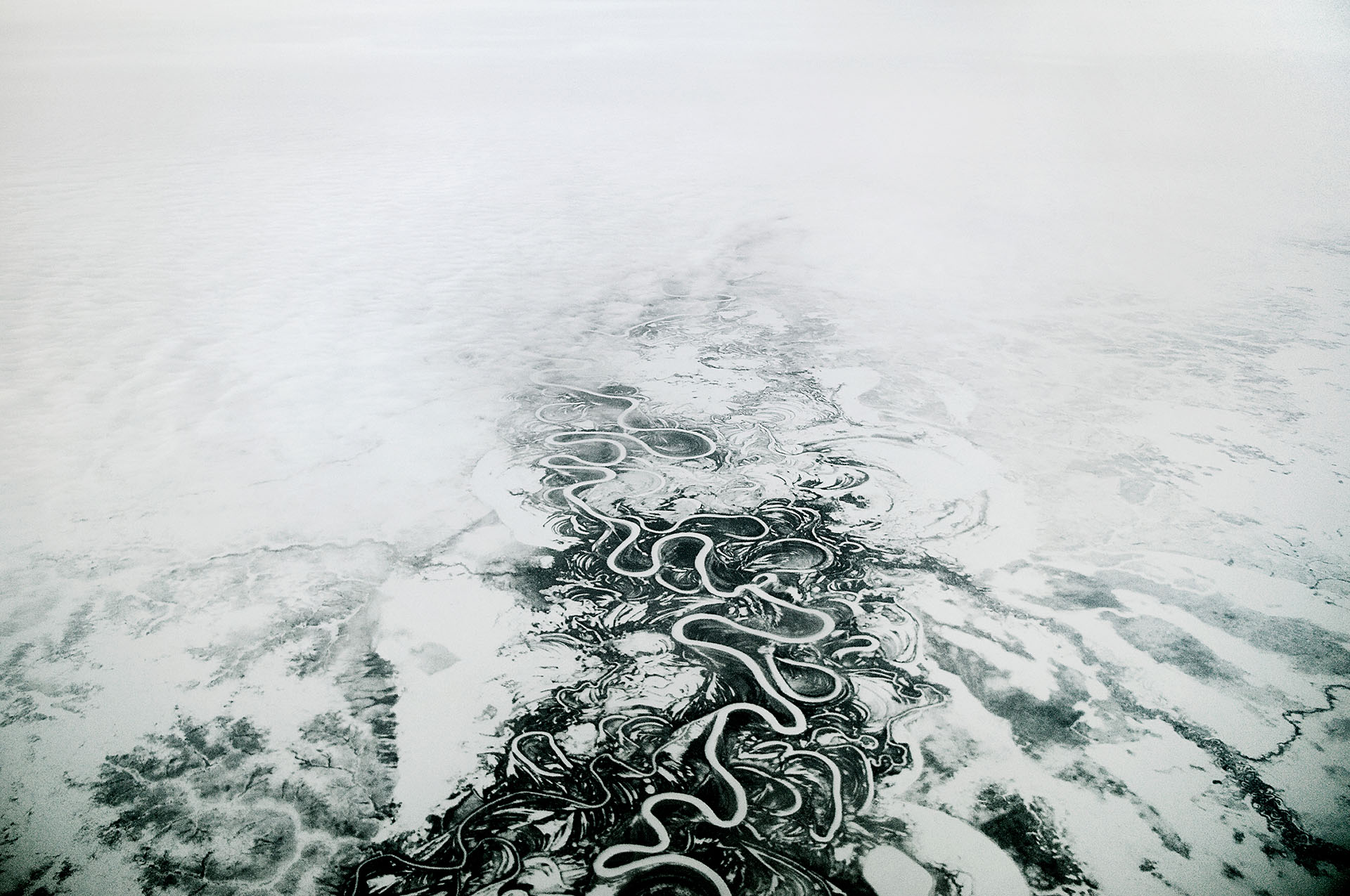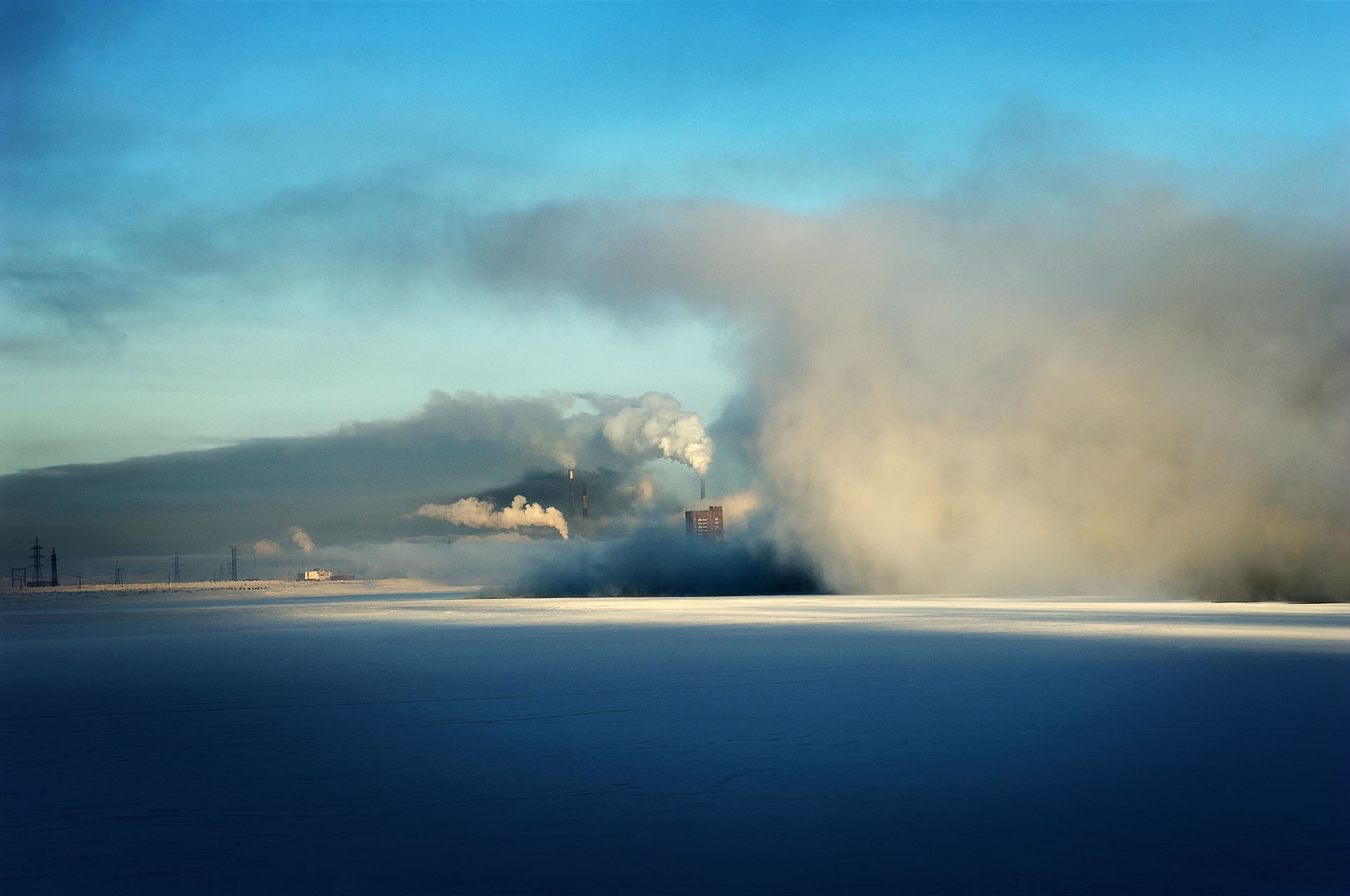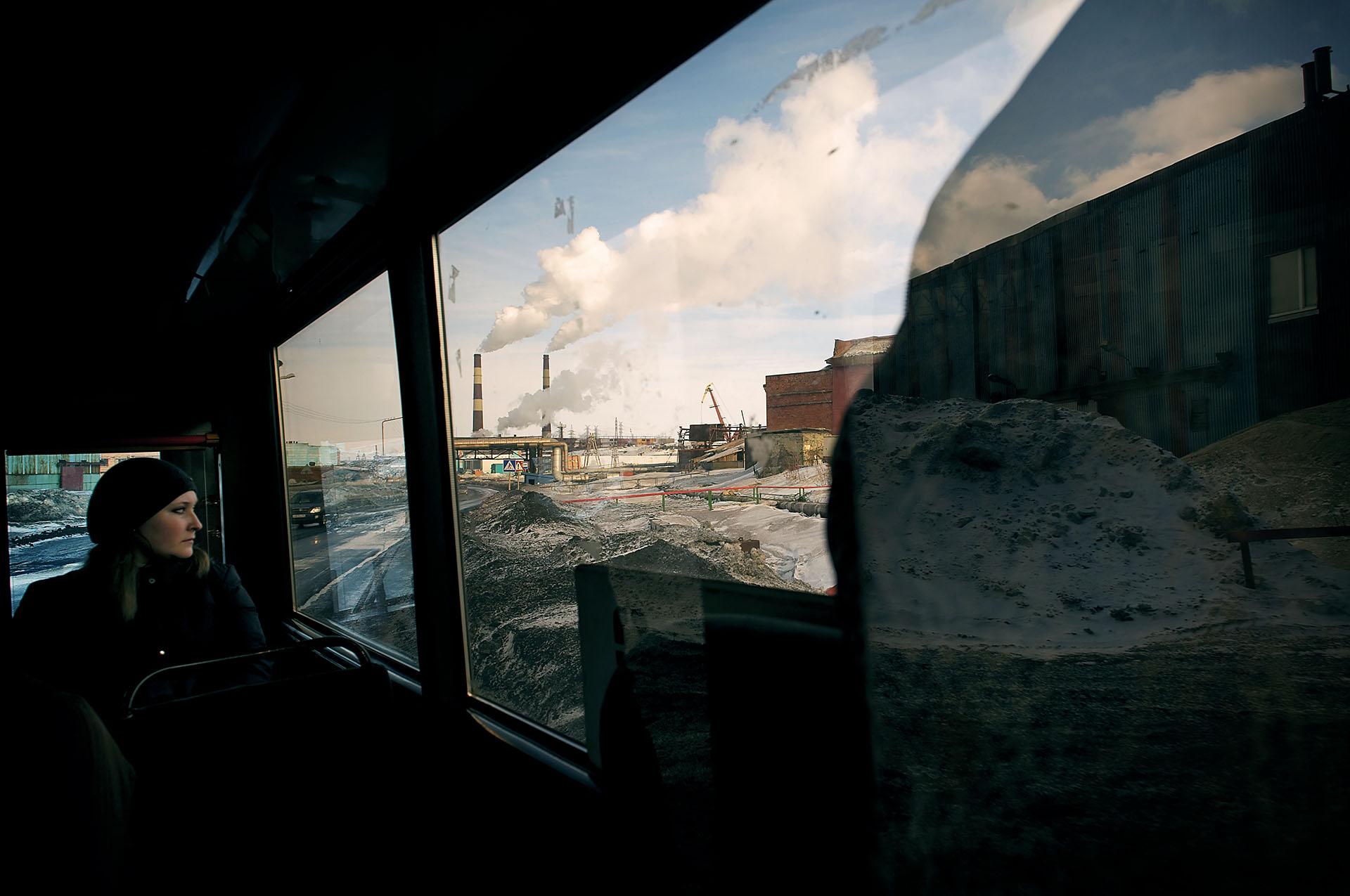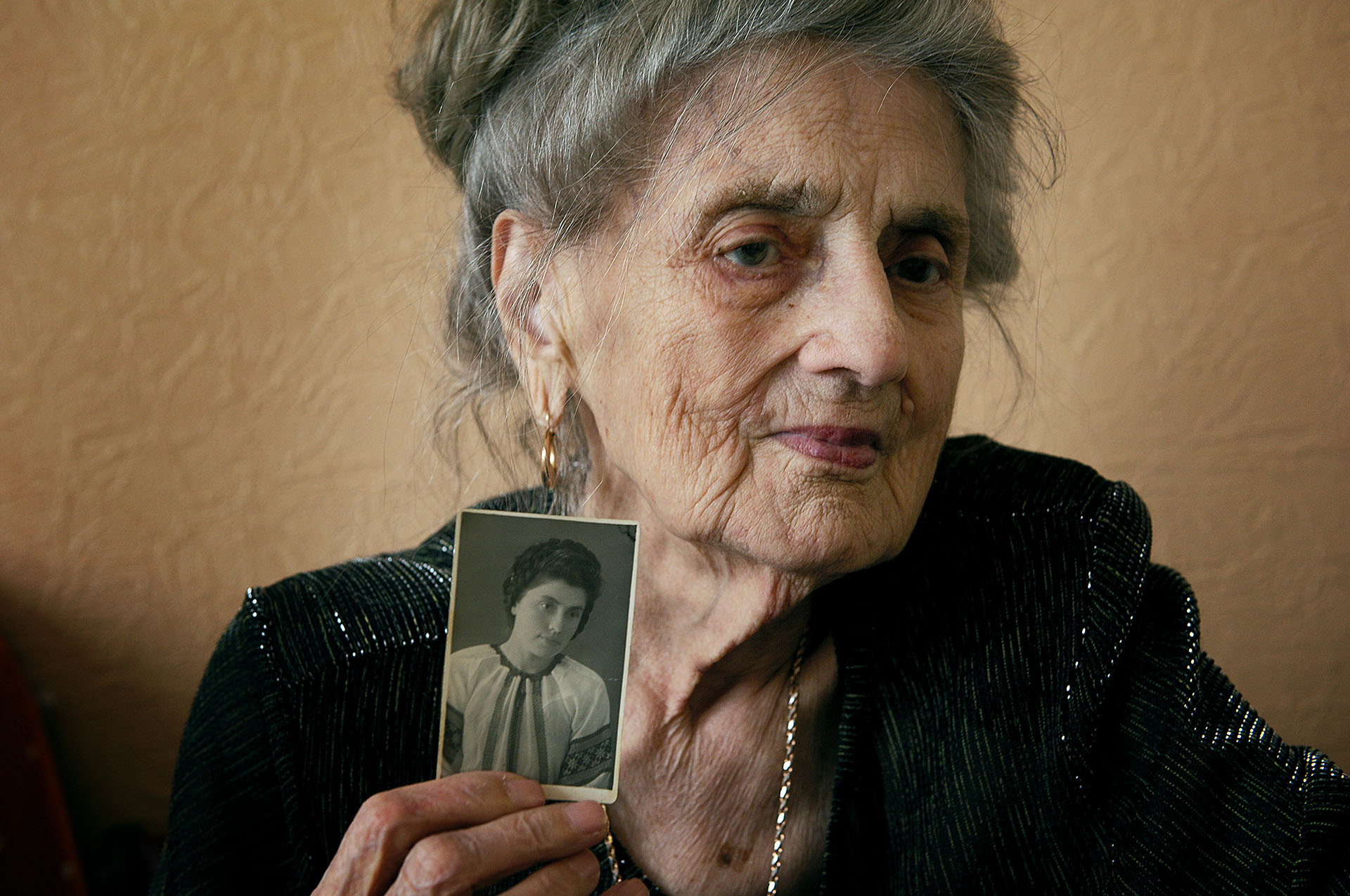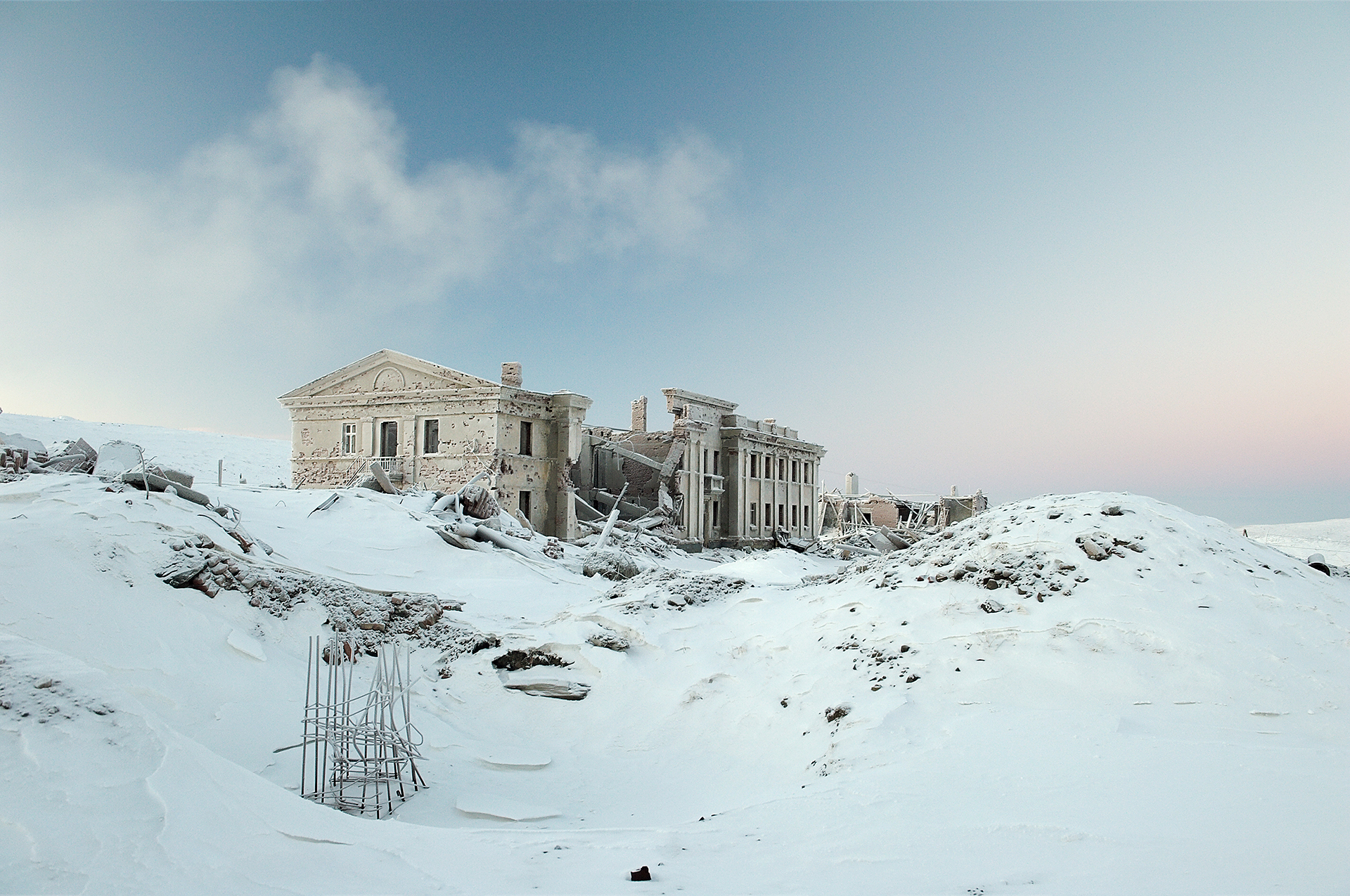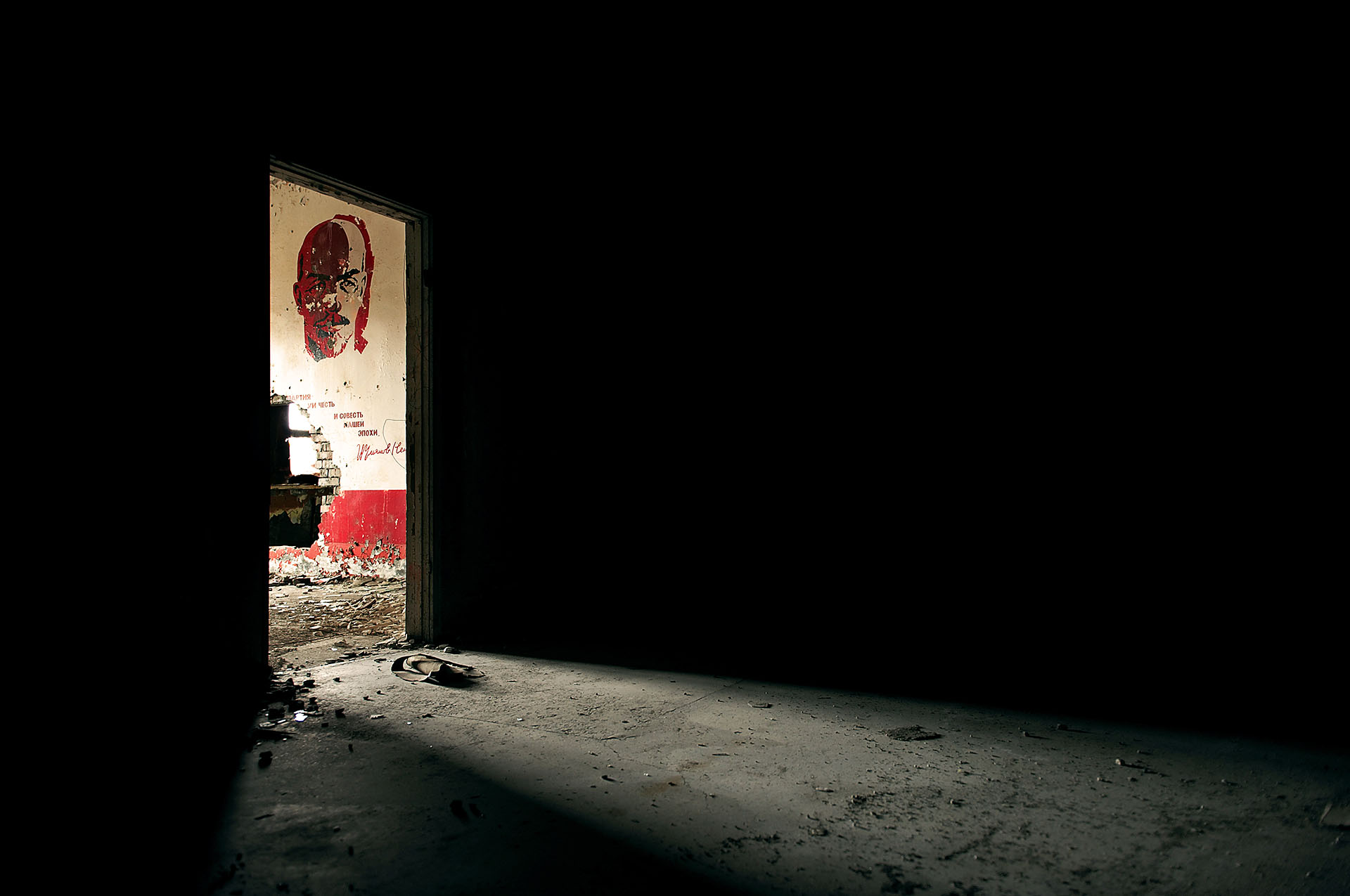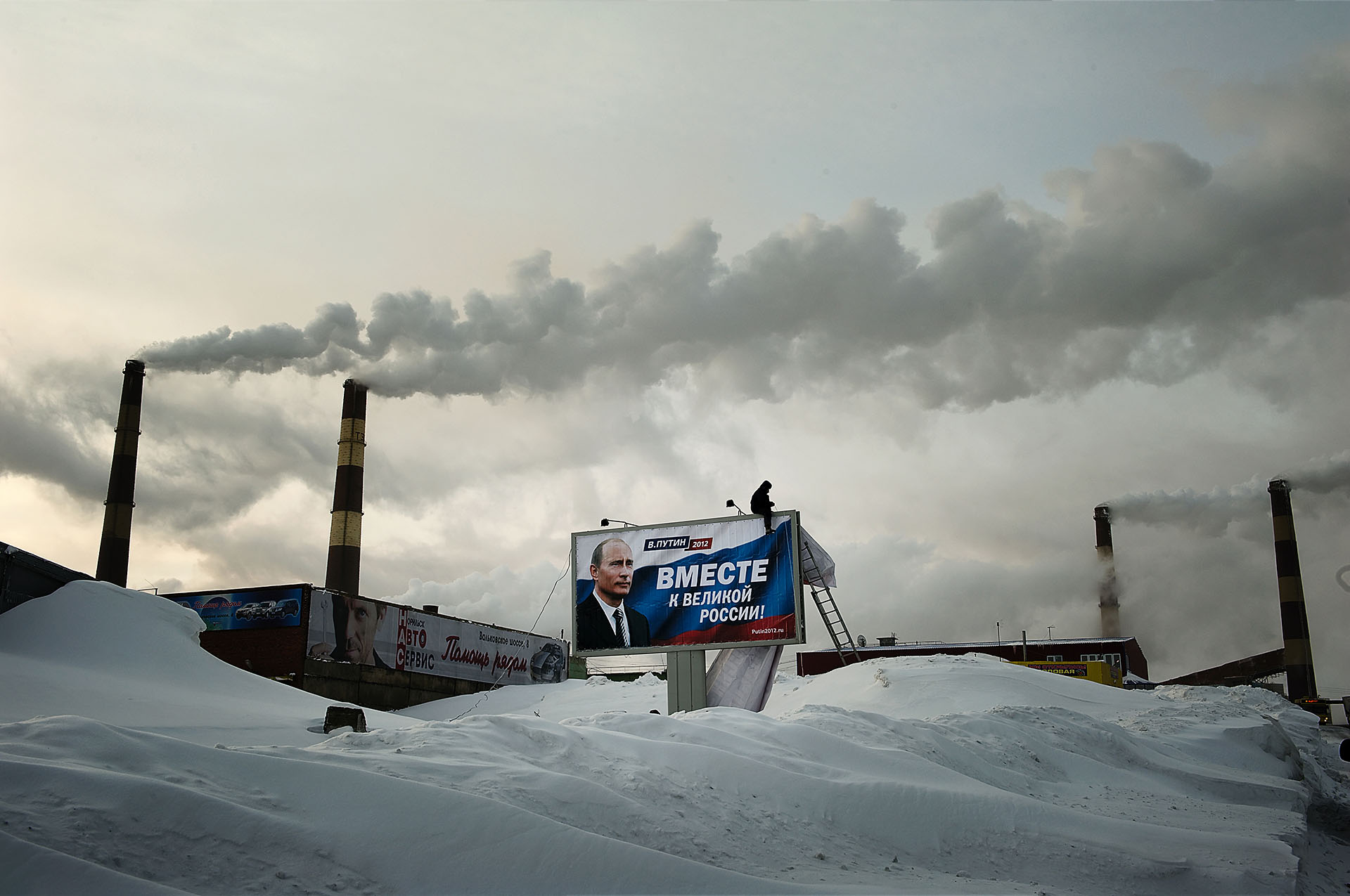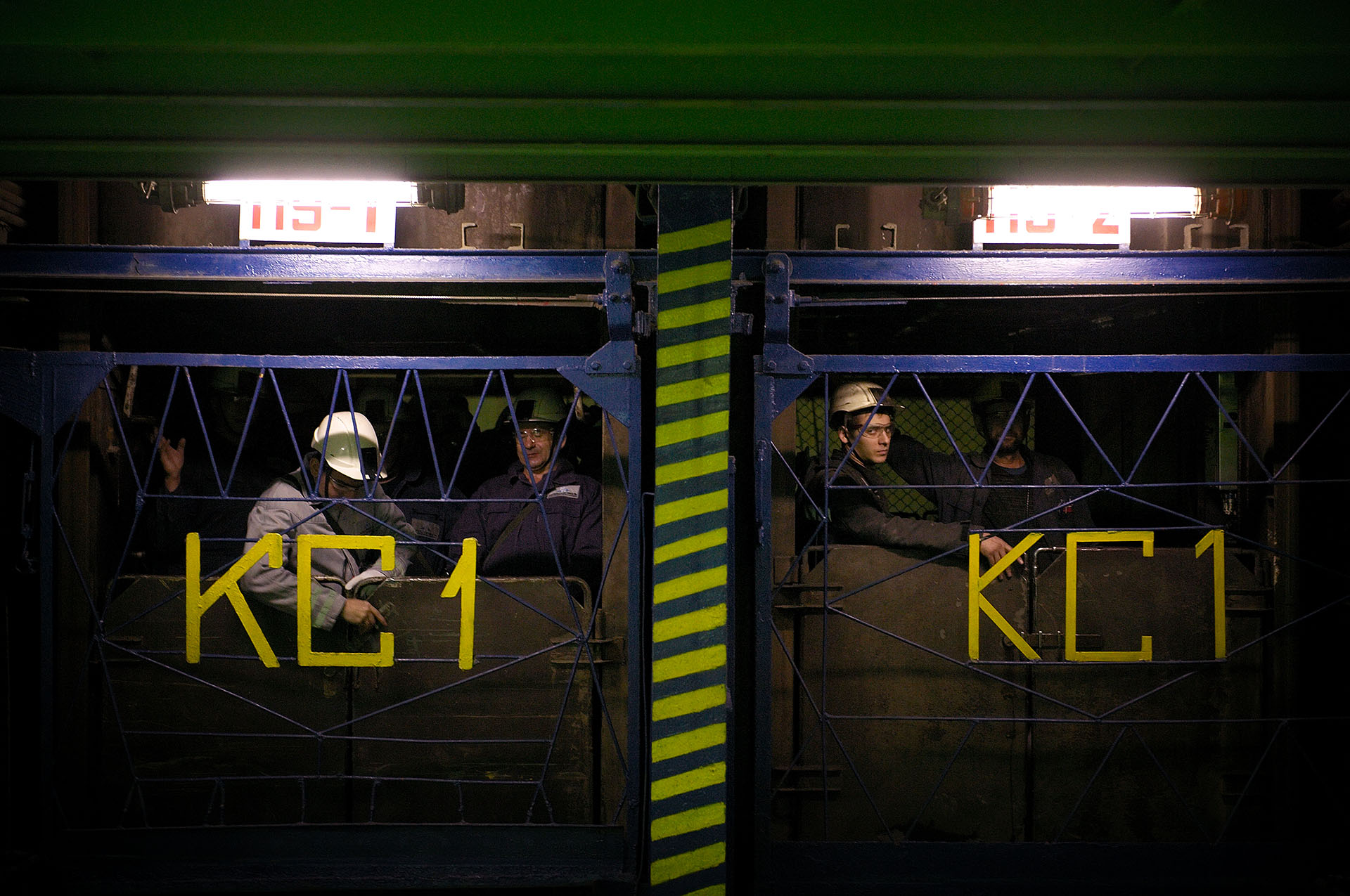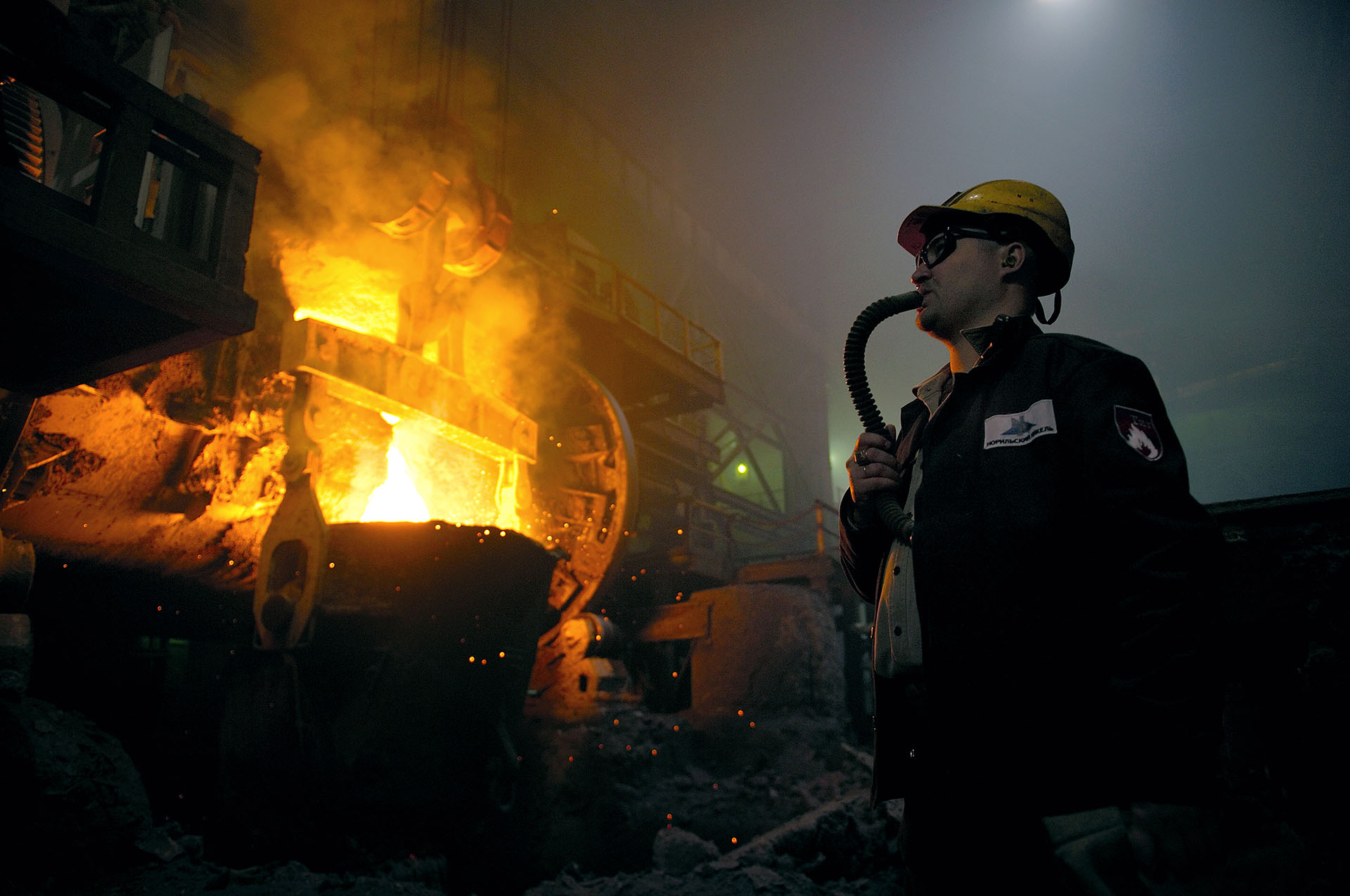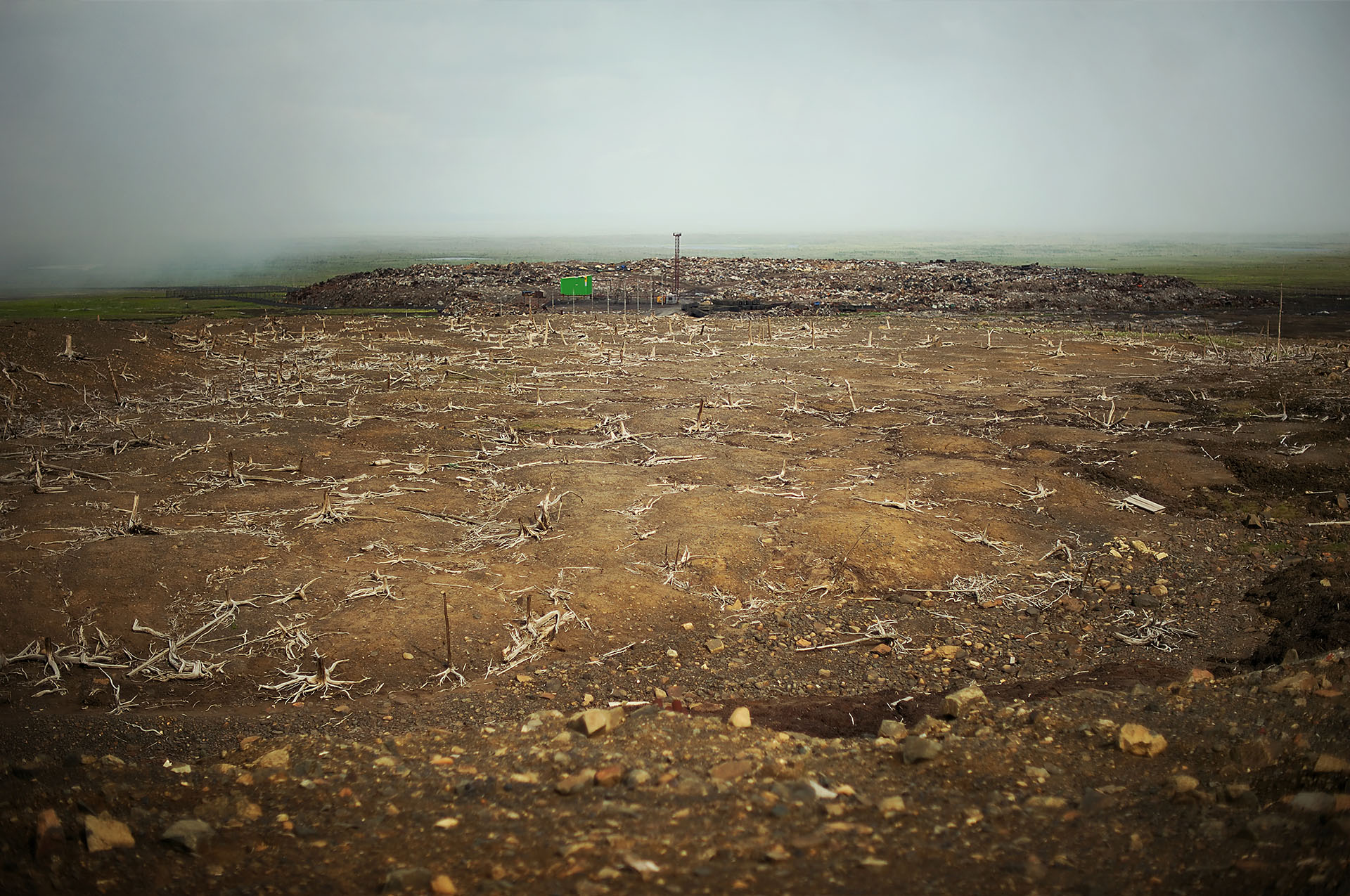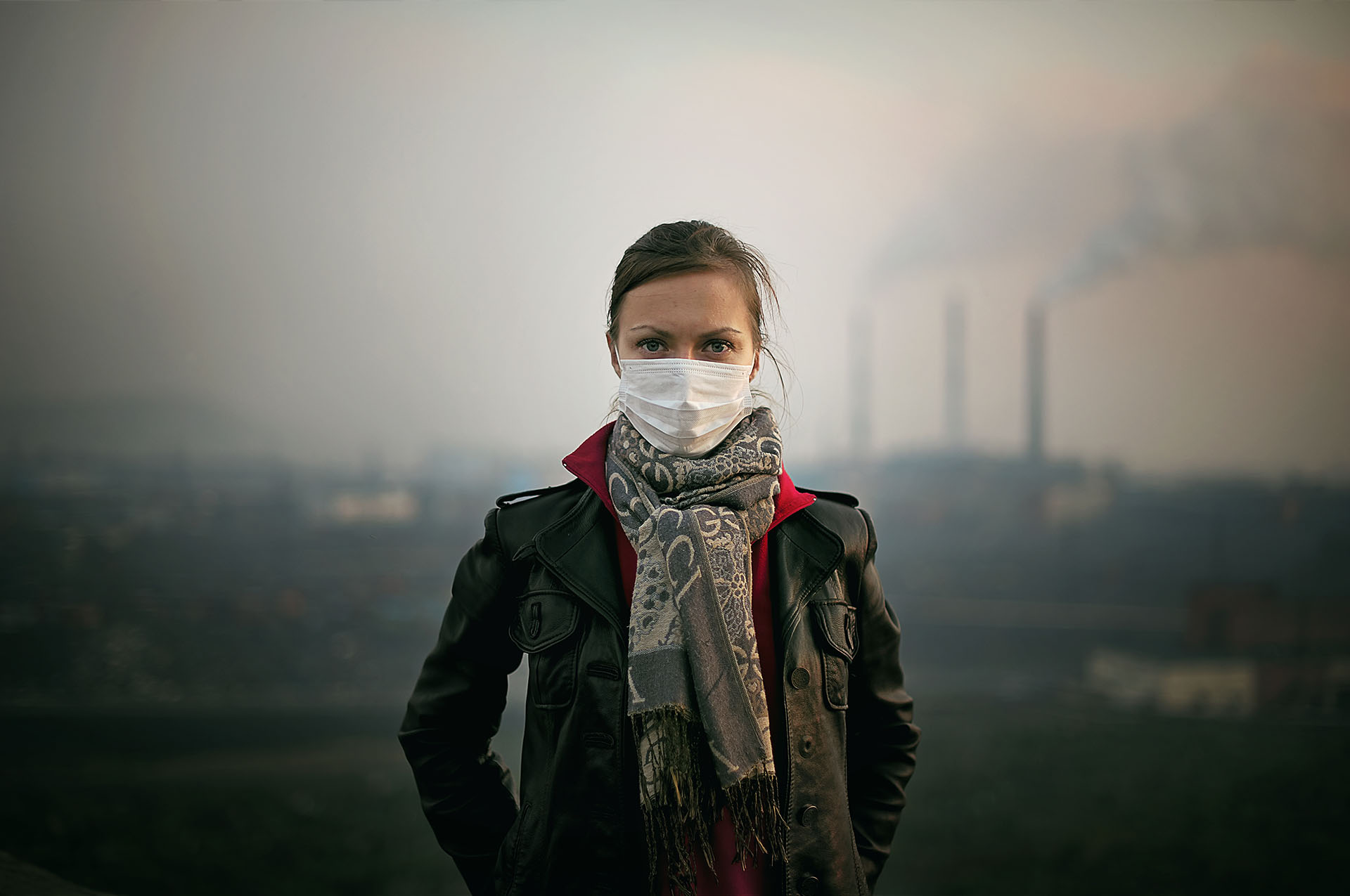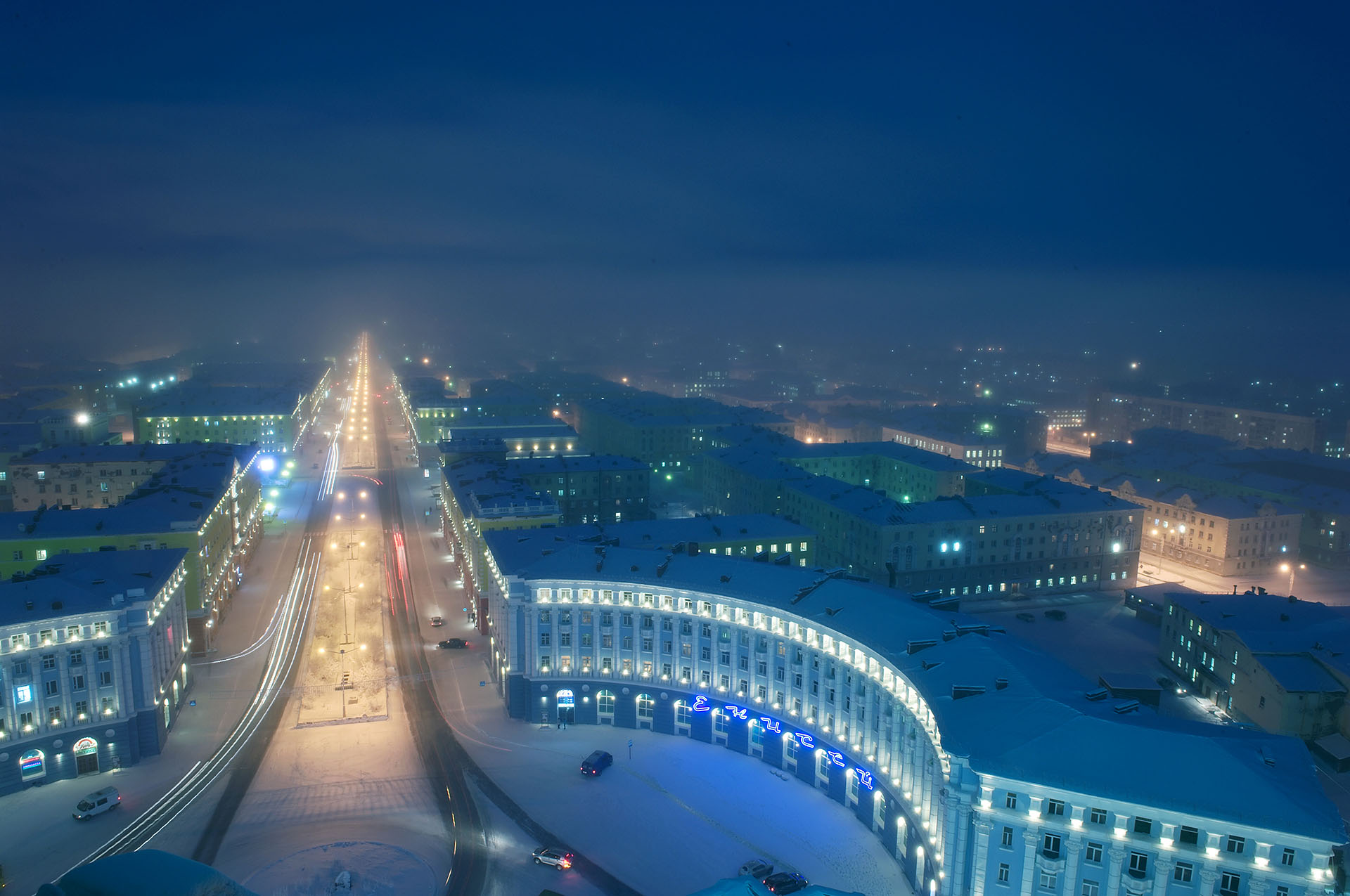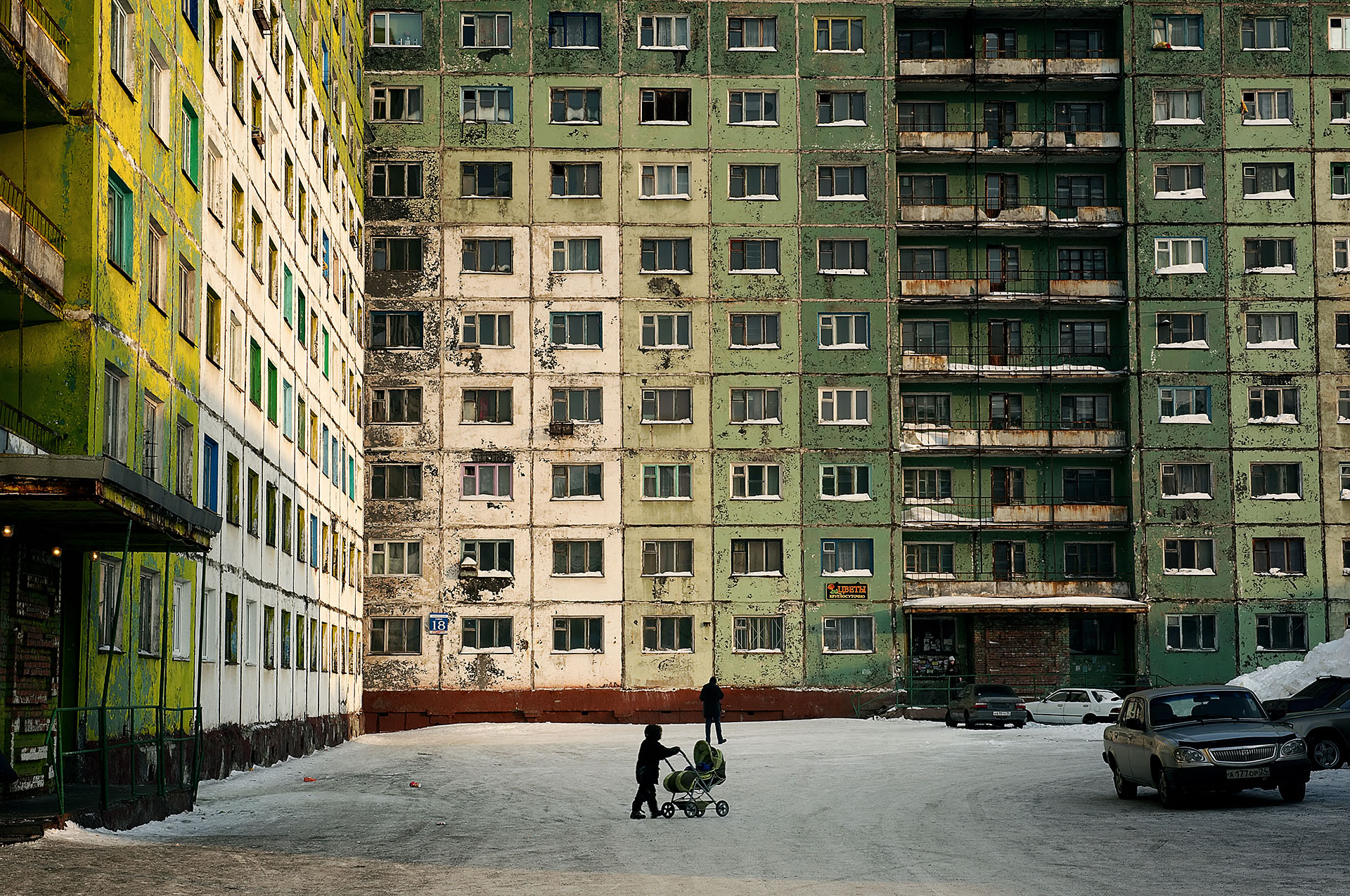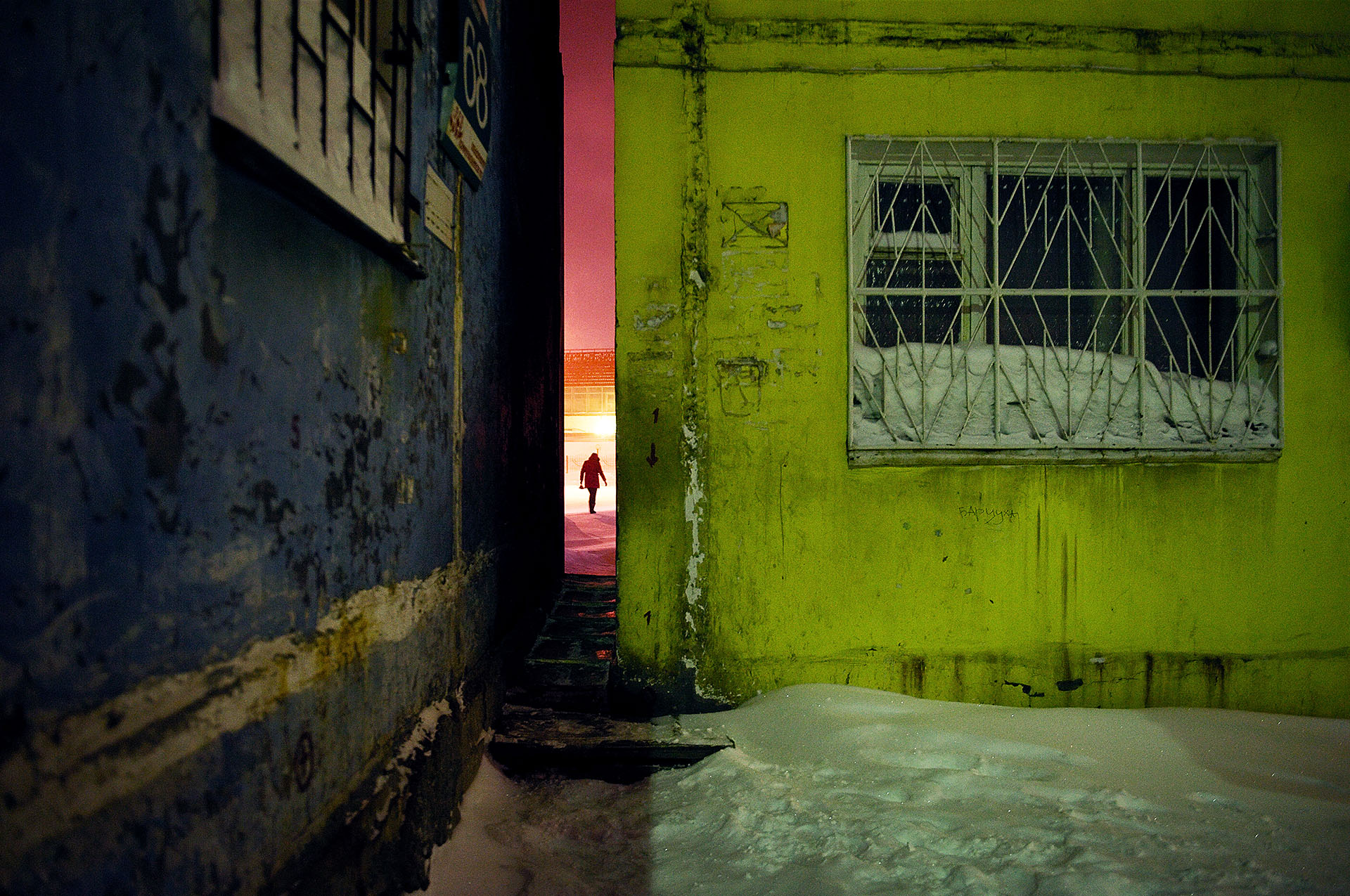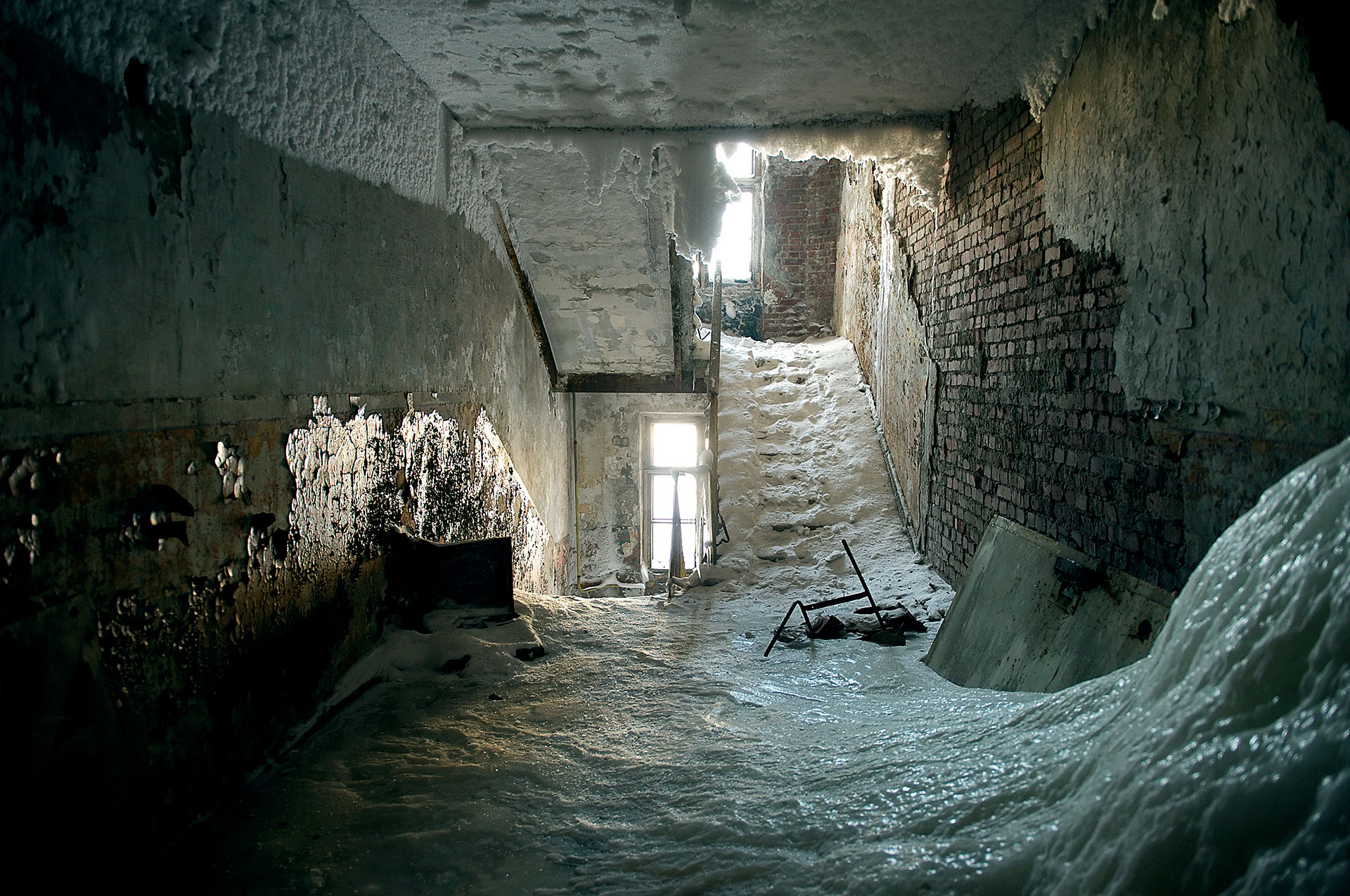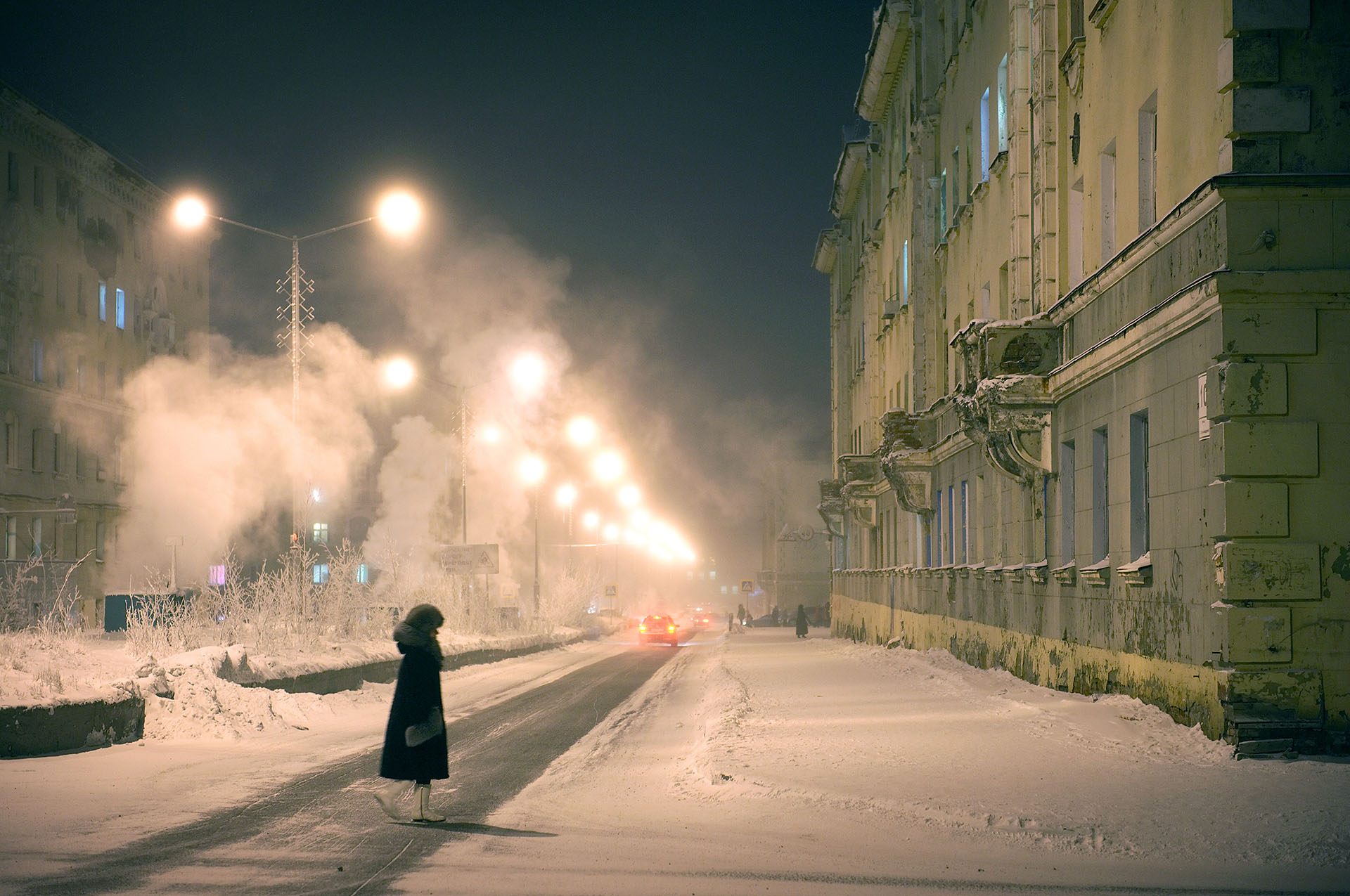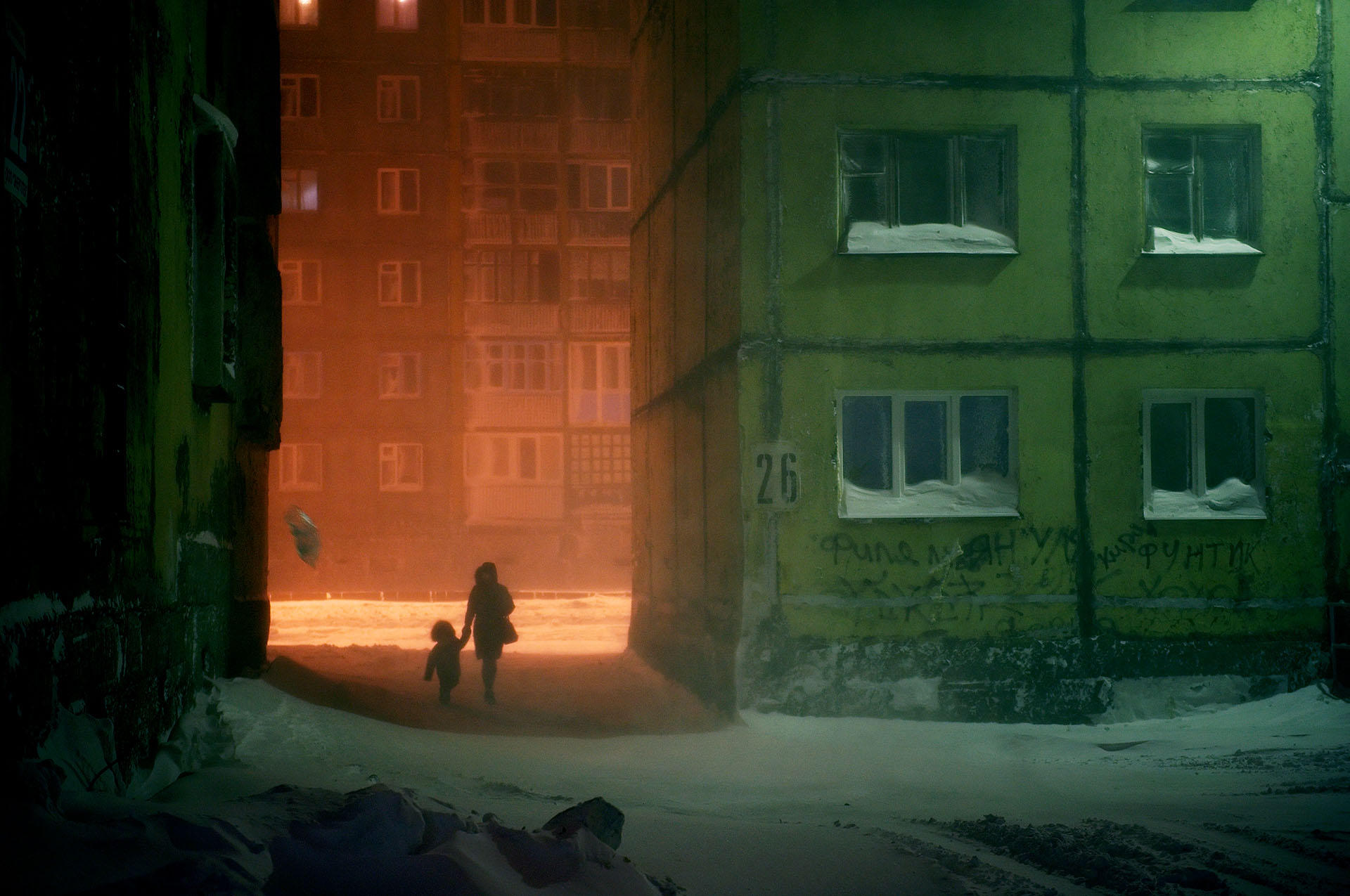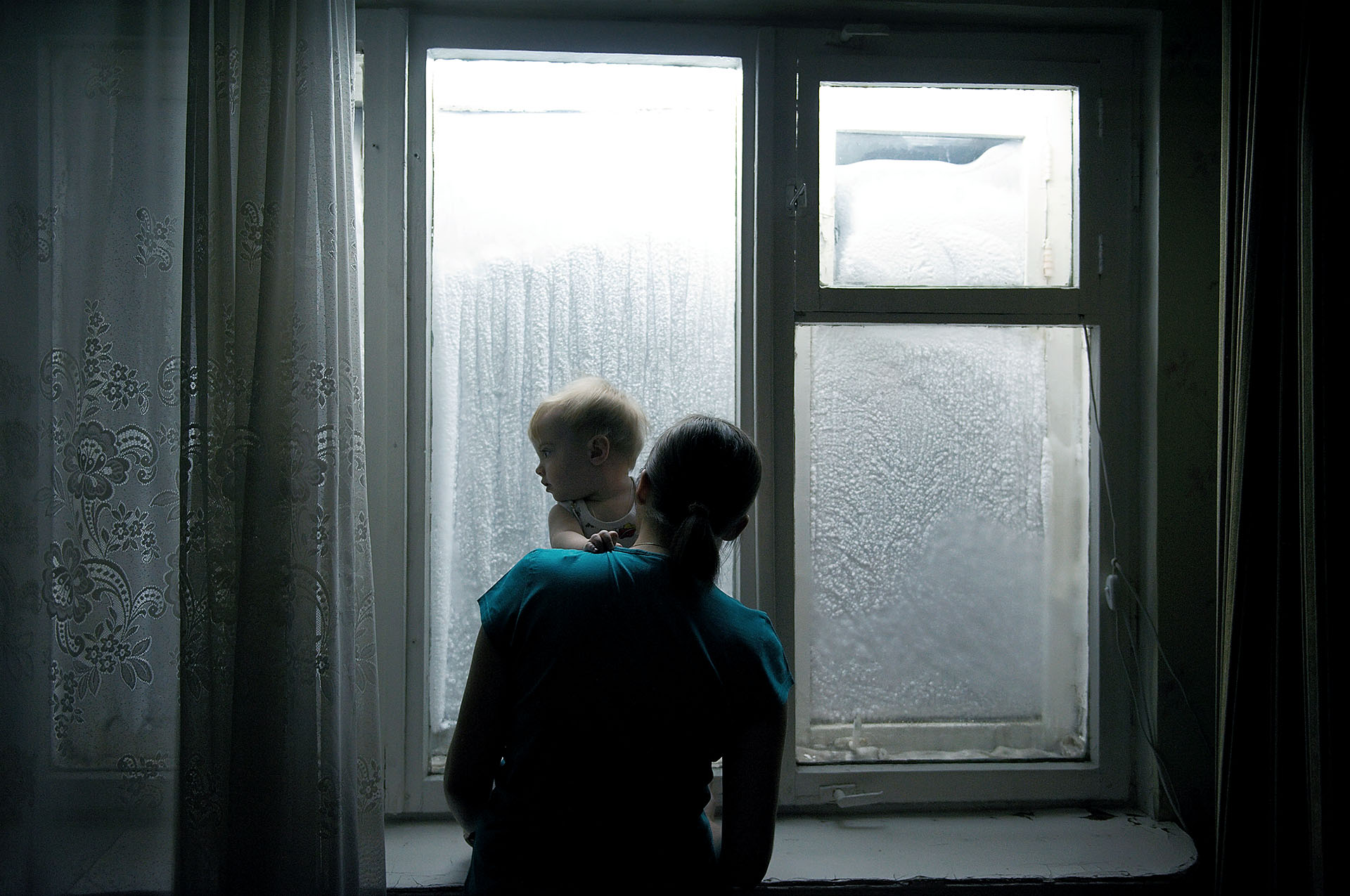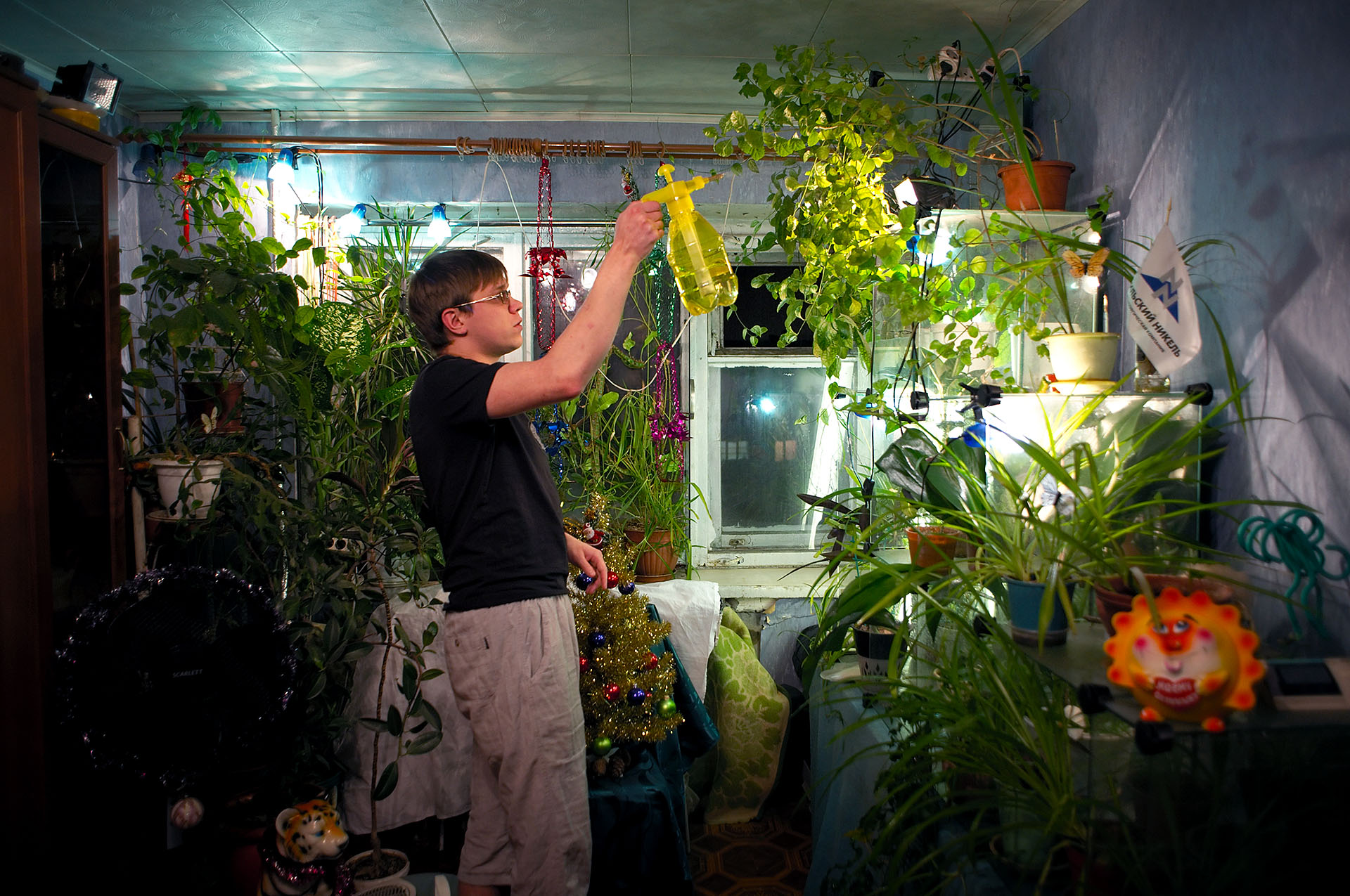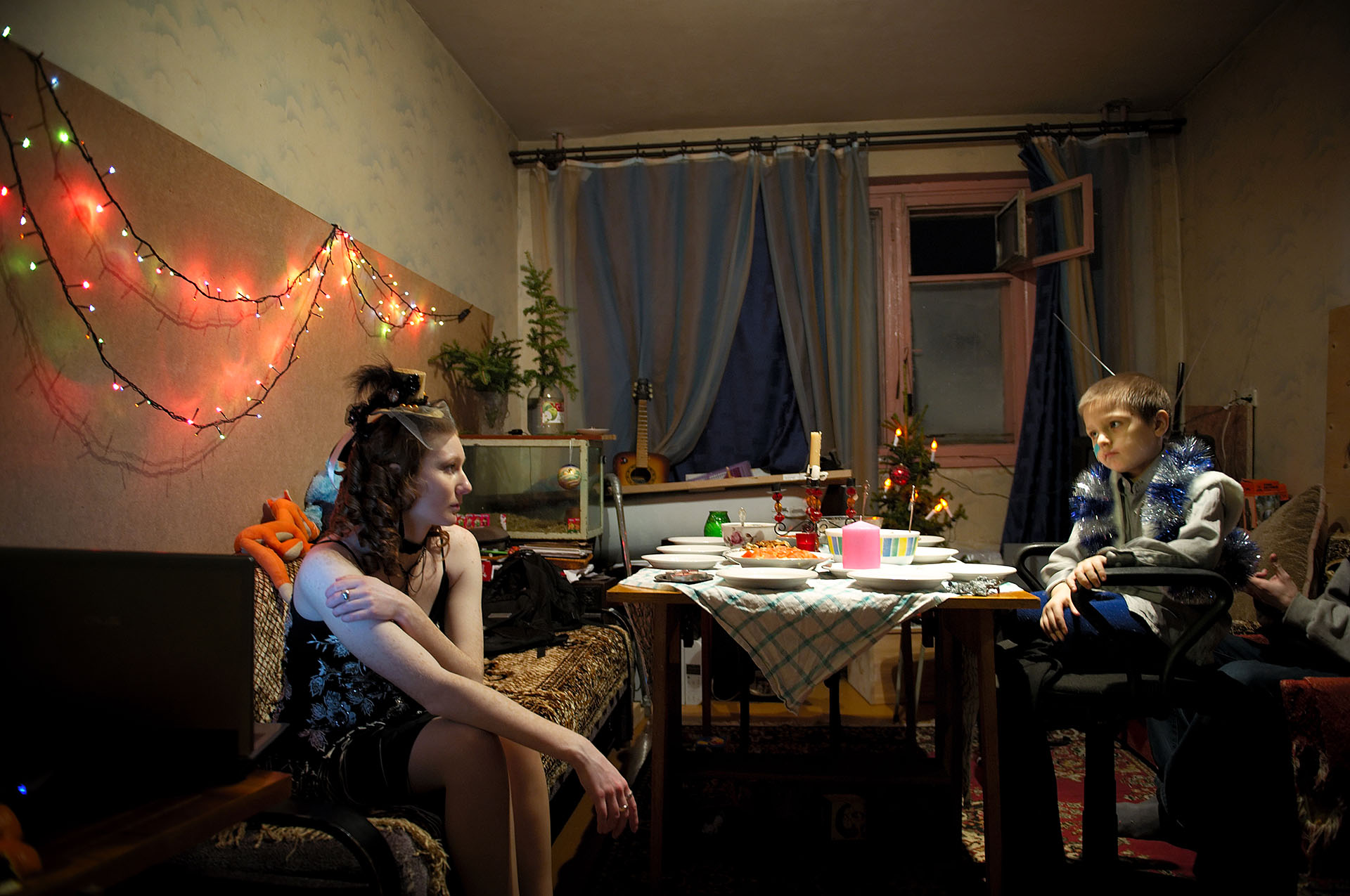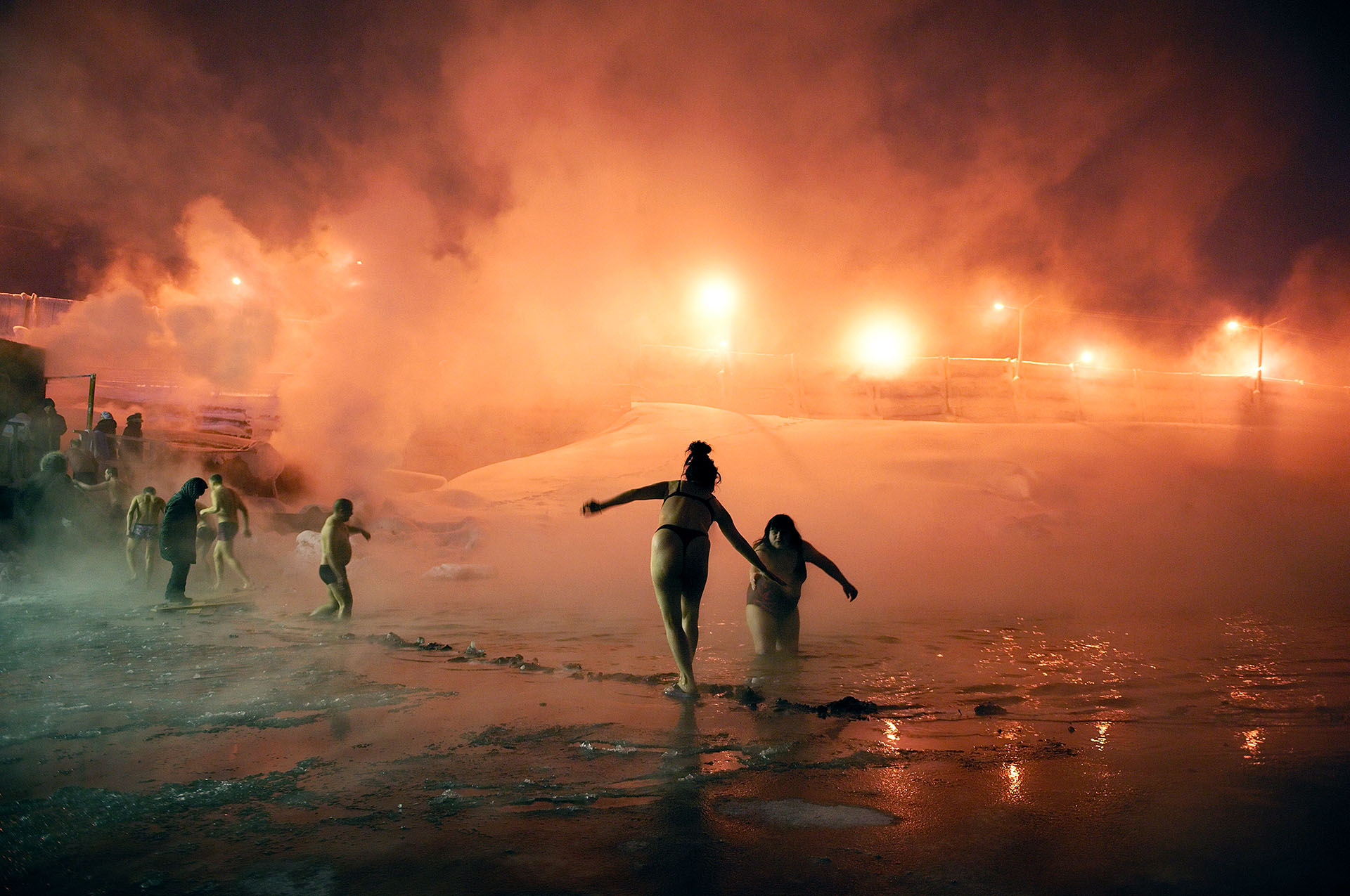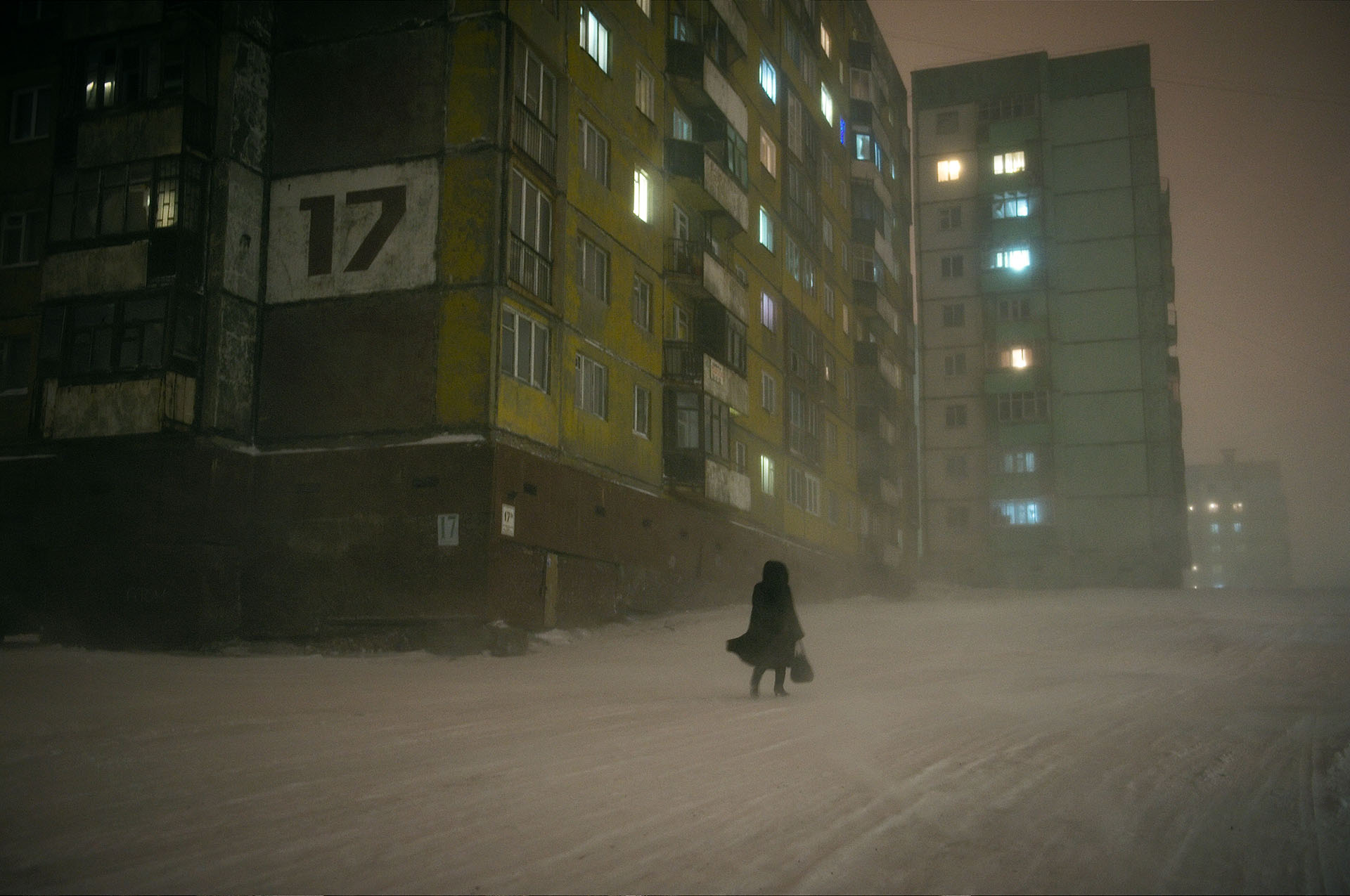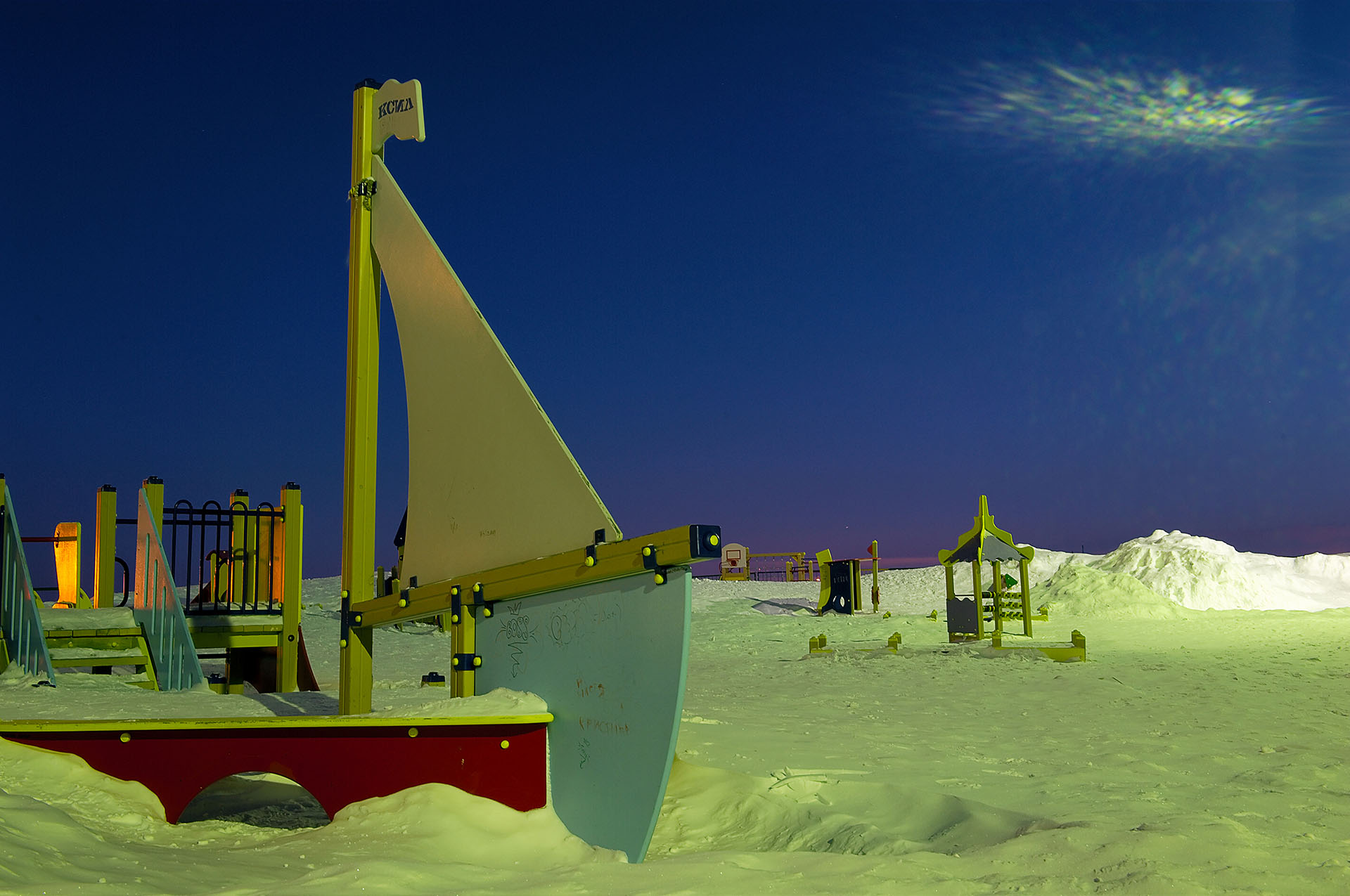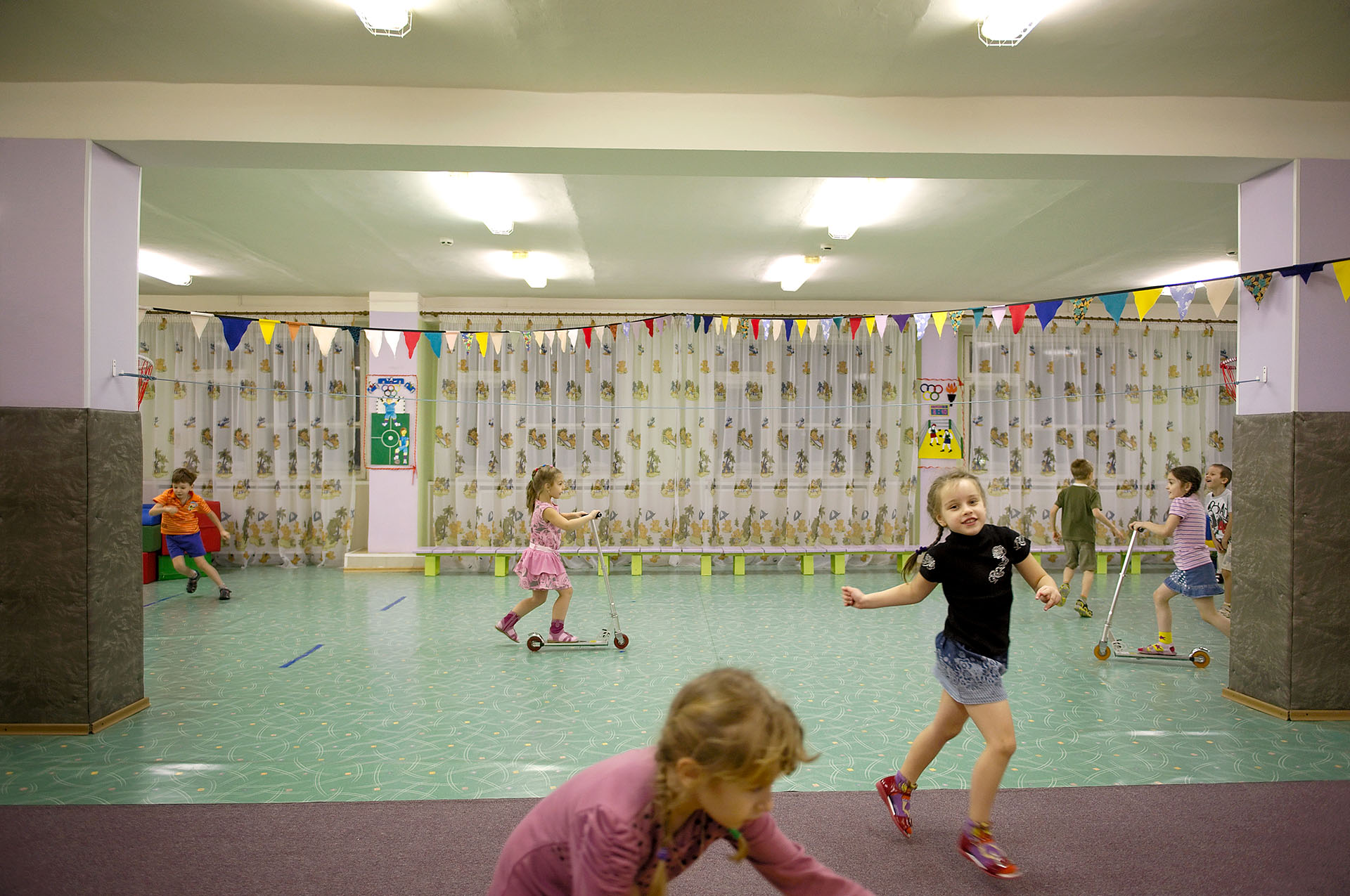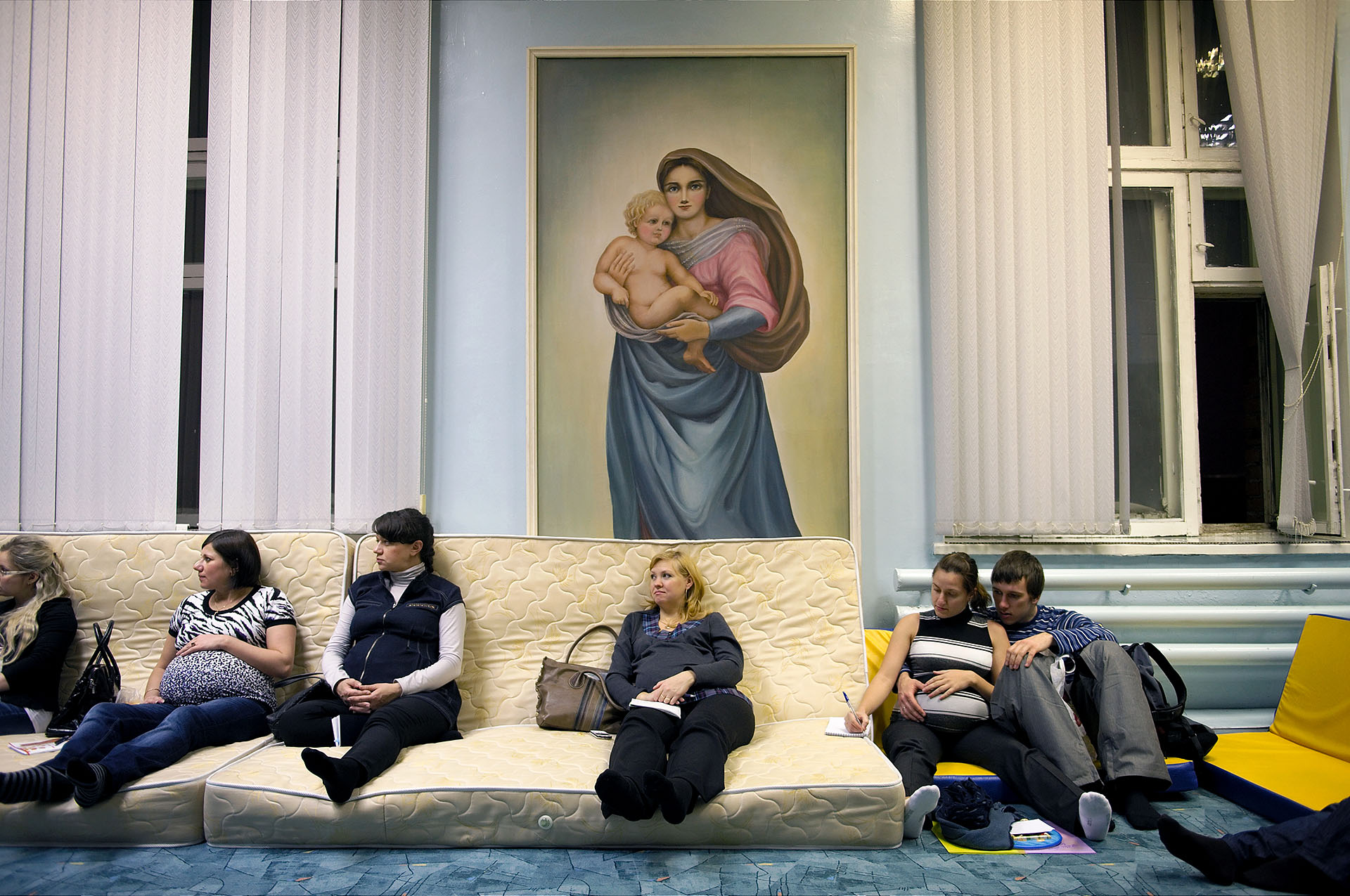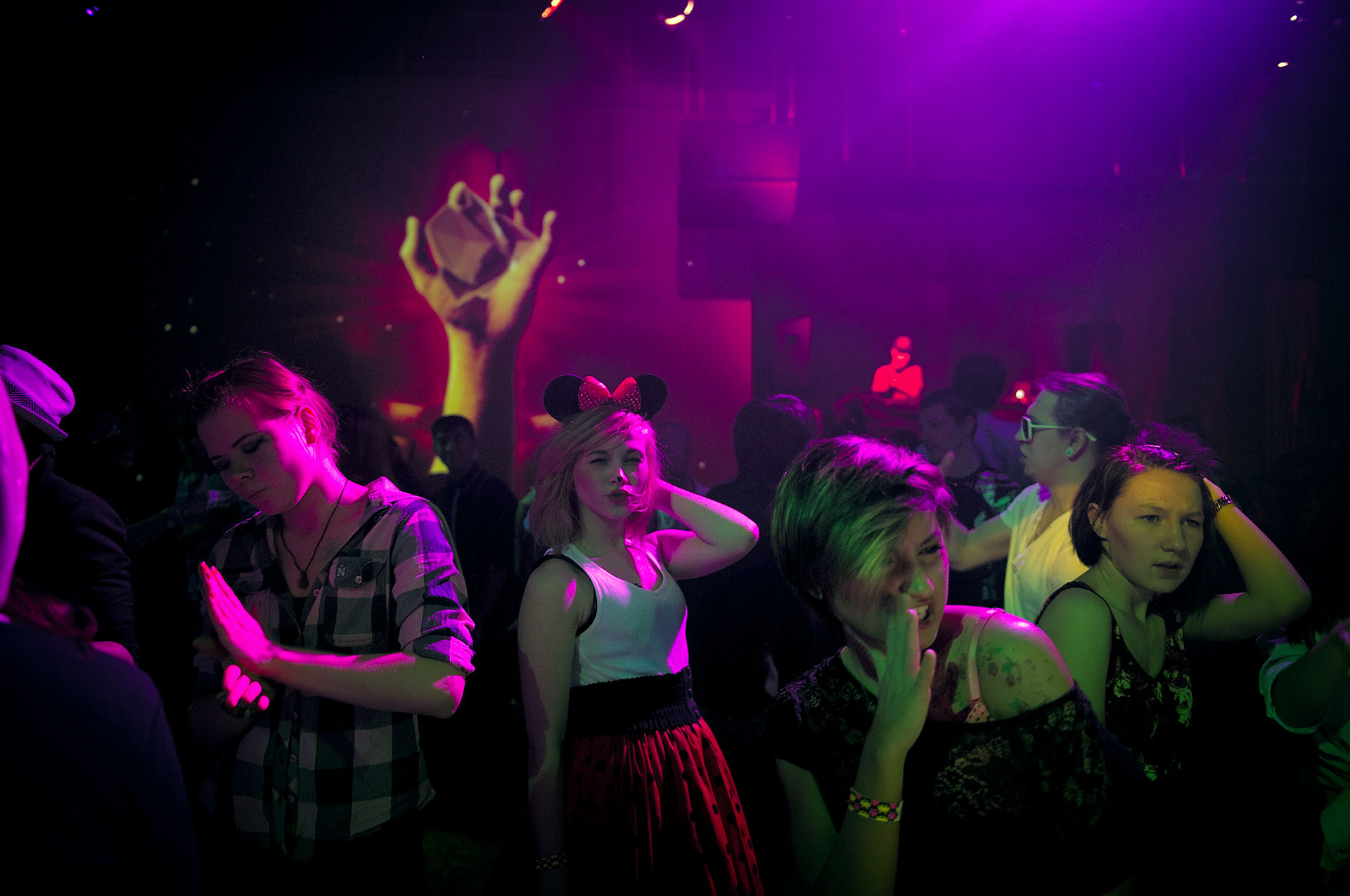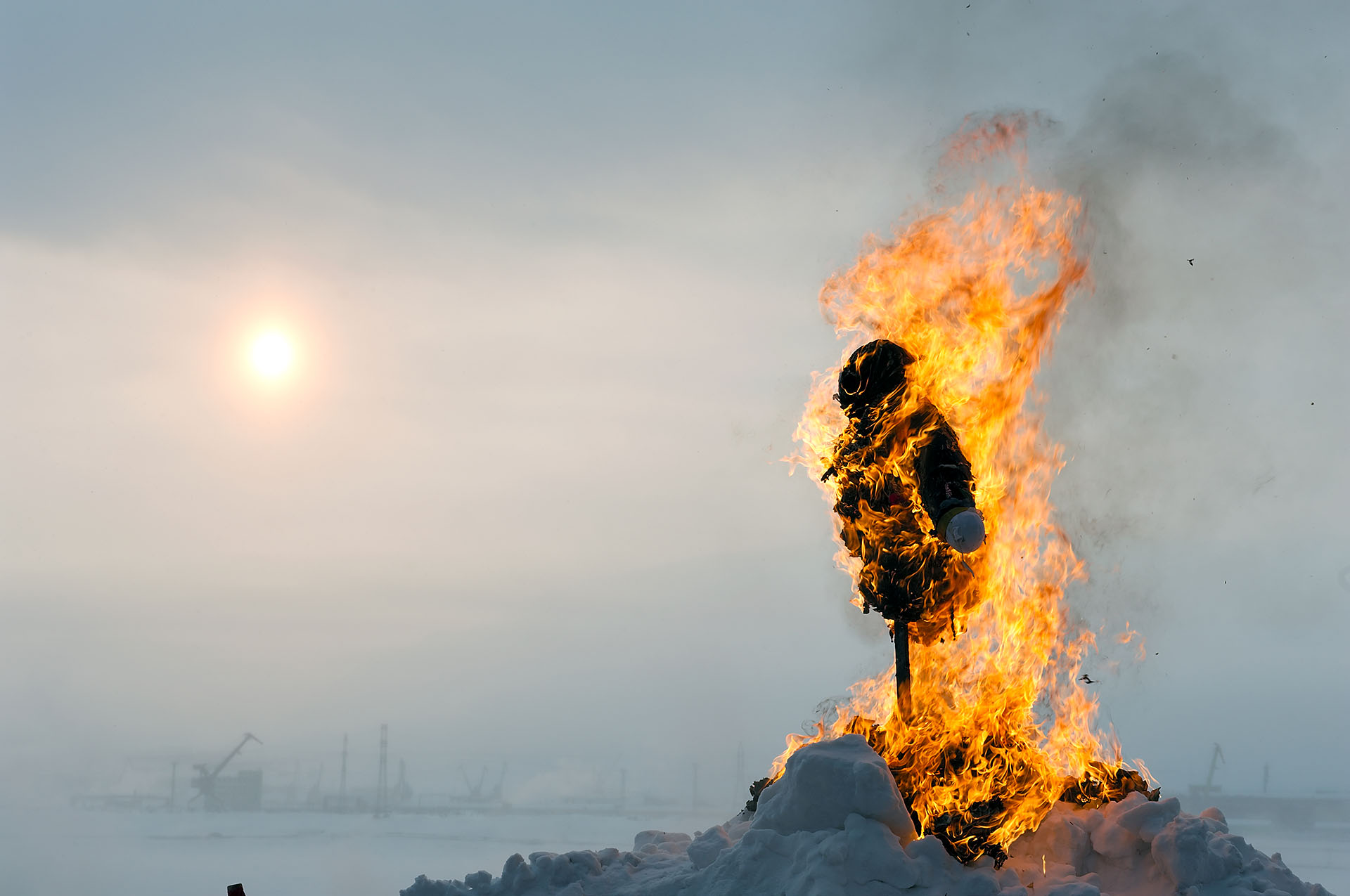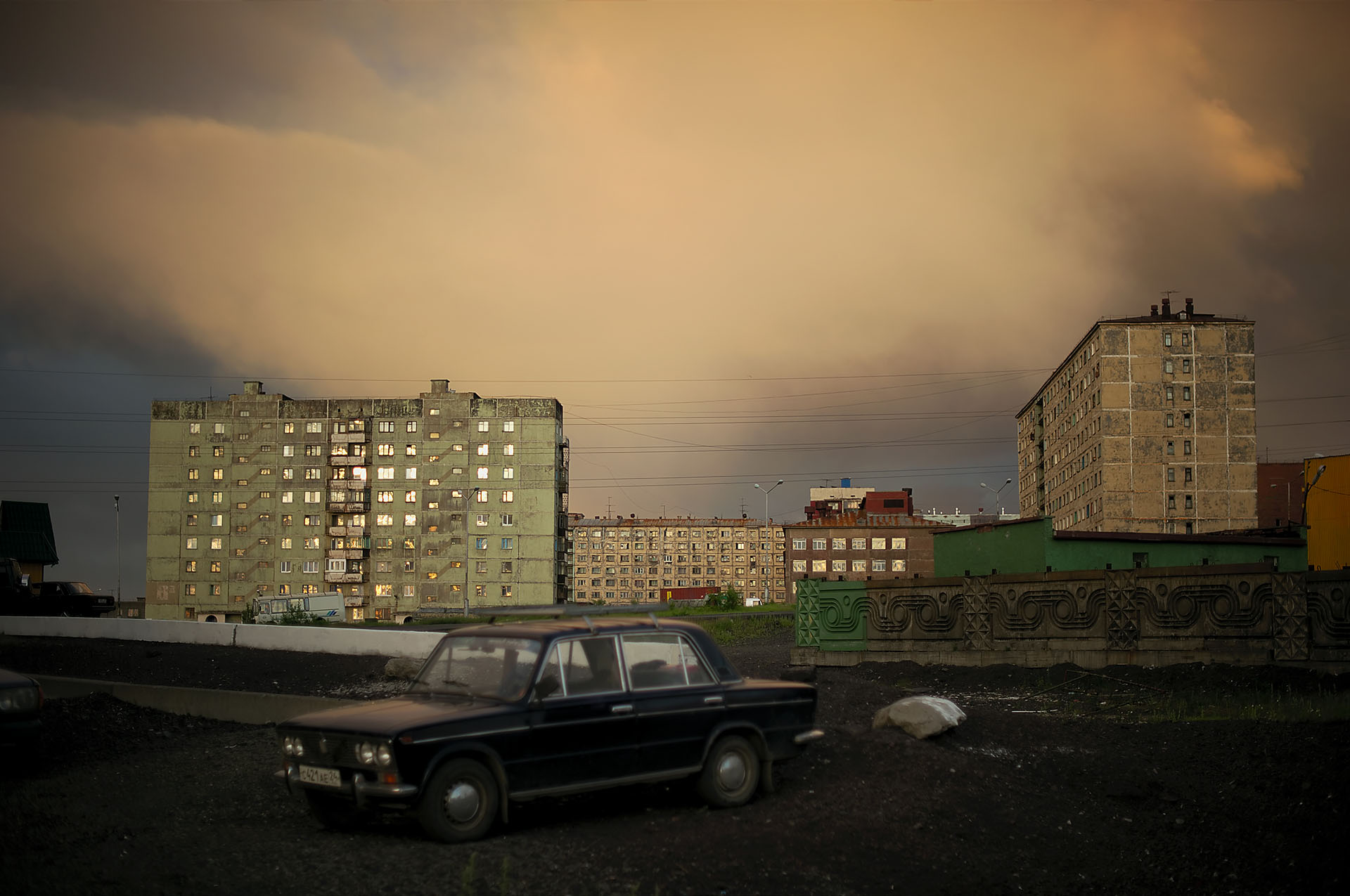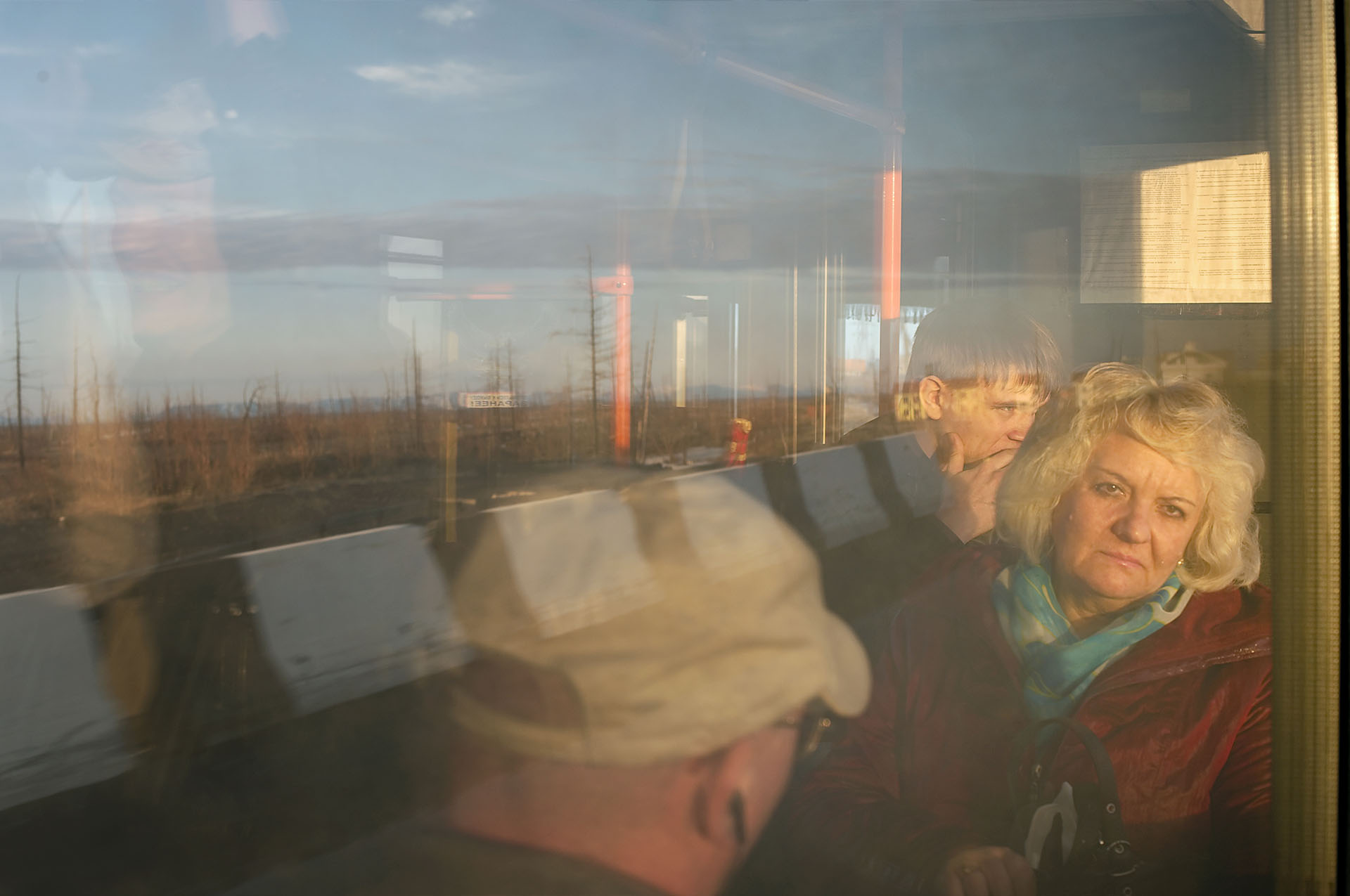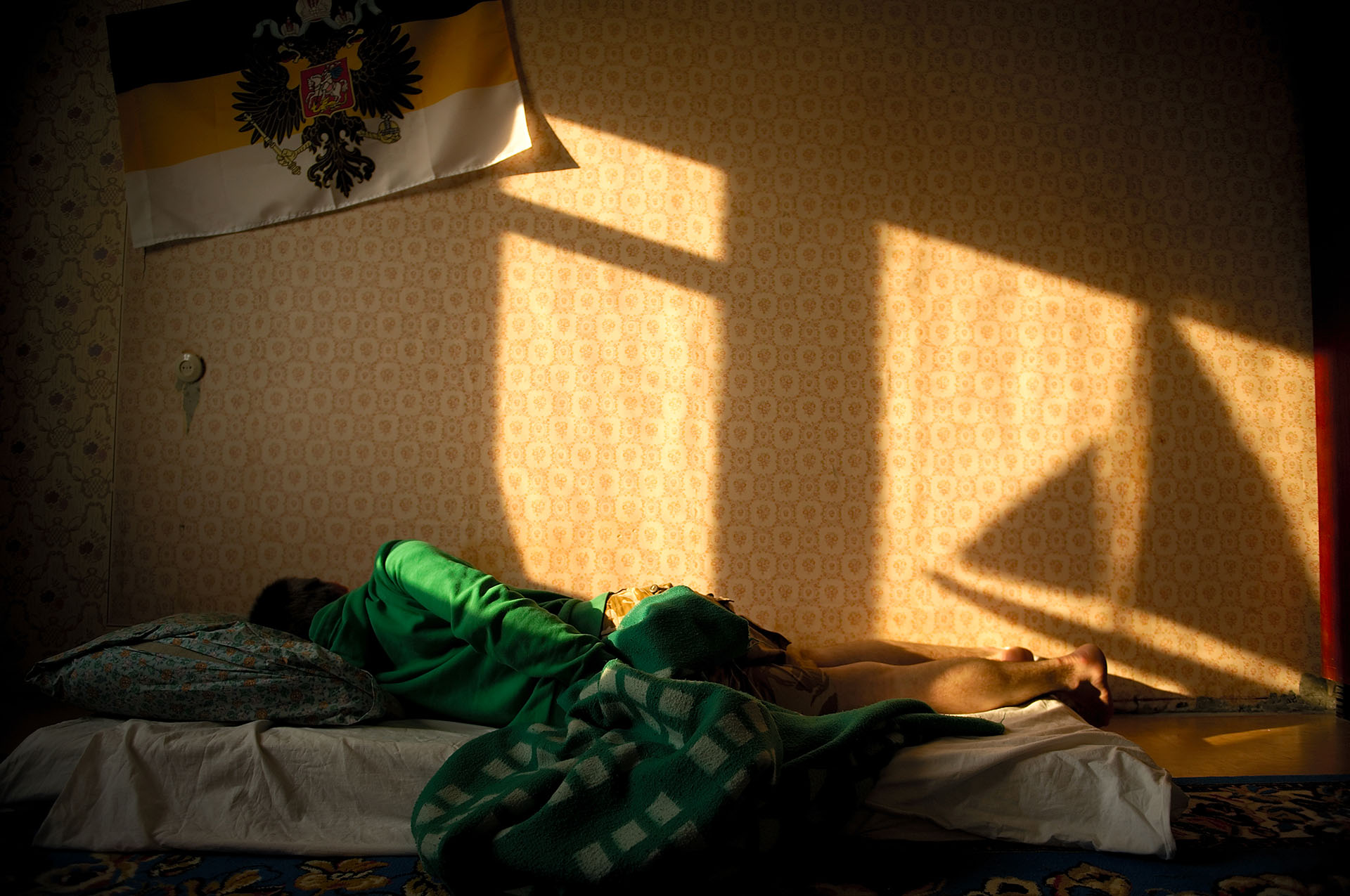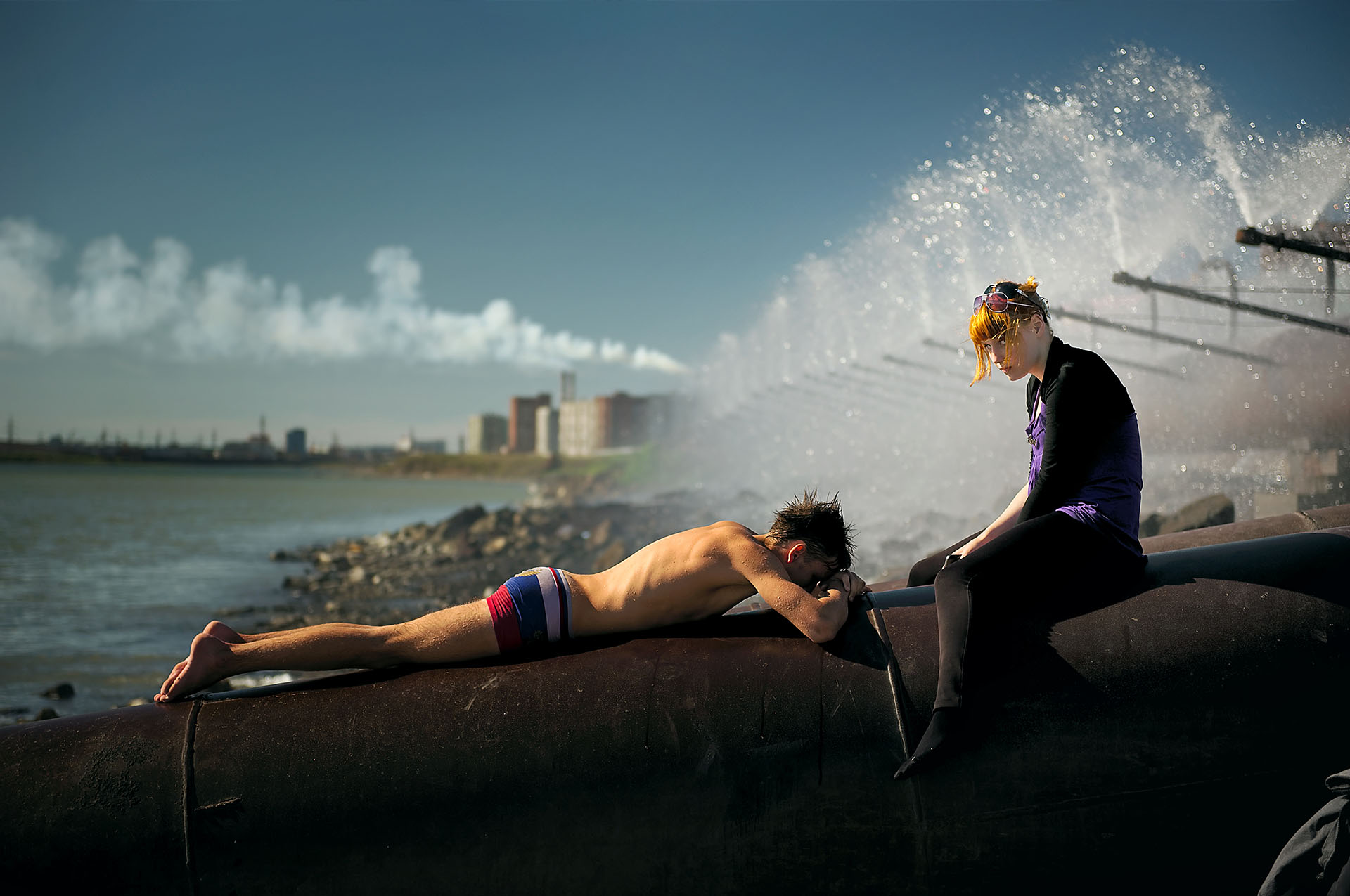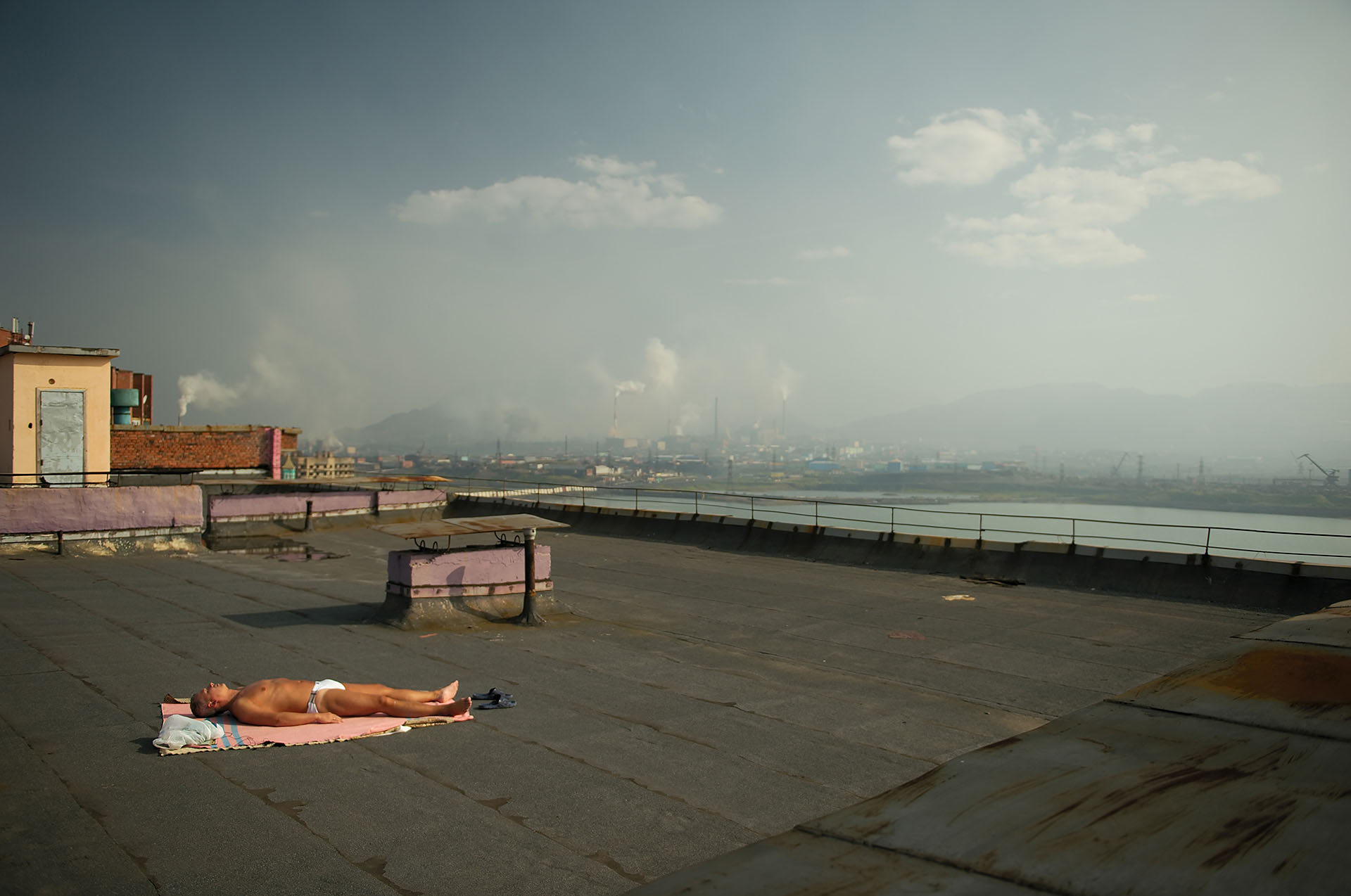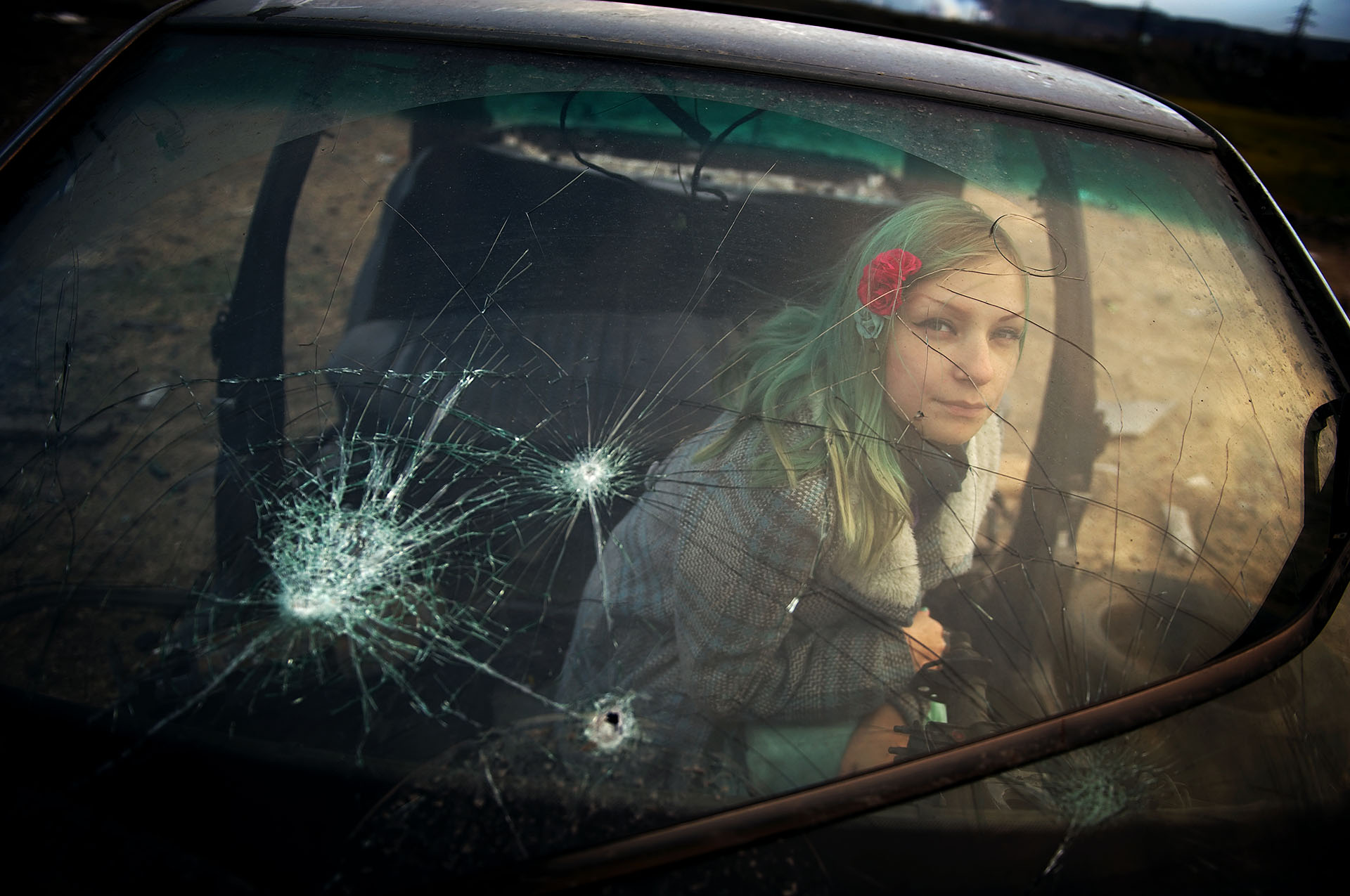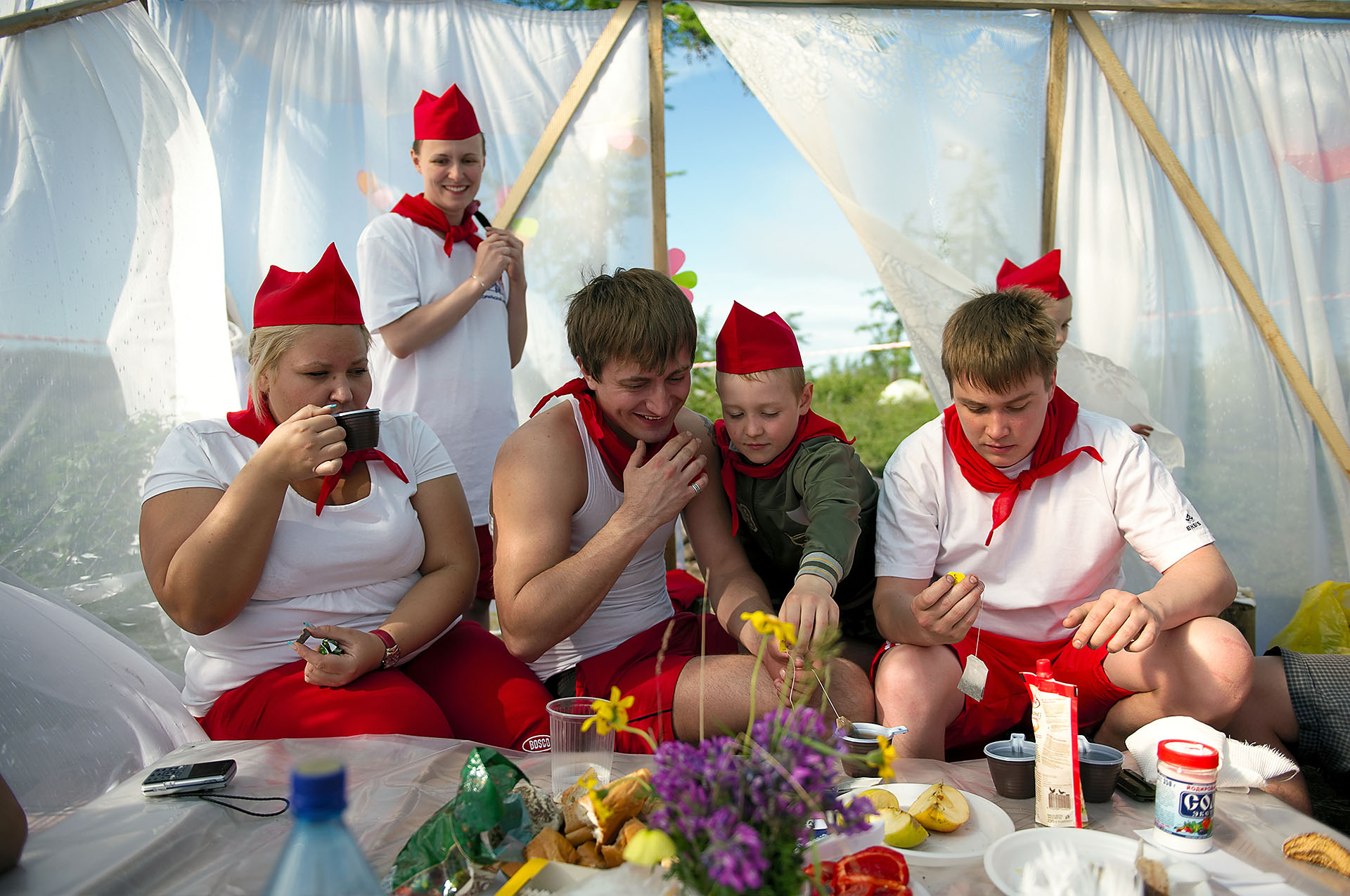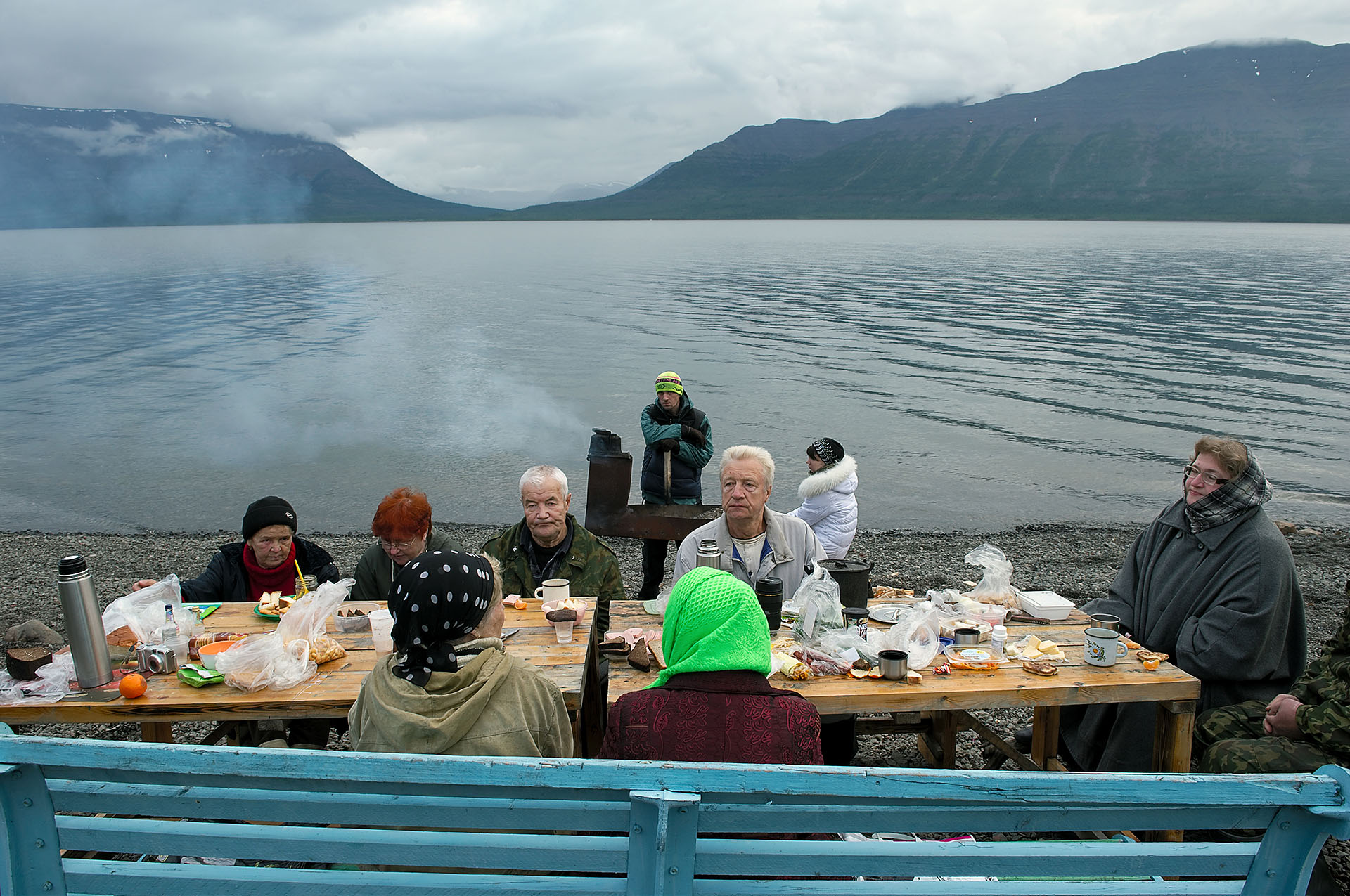Days of Night – Nights of Day
2012-2013, with the support by Lagardère foundation grant for photography
Norilsk, in northern Russia, is (after Murmansk) the second-largest city within the Arctic Circle, with a population of over 177,000.
It is also one of the ten most polluted cities in the world. 2 million tons of gas are rejected every year in the atmosphere, 100 000 ha of tundra in the radius of 30 km Is dead, the life expectancy is 10 years less than in other regions of Russia.
Rich metal and mineral deposits make the region a primary global source of such commodities as nickel, cobalt, platinum and palladium, and Norilsk maintains the biggest metallurgical and mining complex in the world.
Norilsk was founded in the 1935s, and until 1956 operated as a Soviet Gulag. During 20 years around 500 000 prisoners labored there in the conditions of intense cold, starvation, and forced under construction of the mines and factories and the city itself.
Norilsk endures an extremely harsh climate, with temperatures dropping below -50°C in the winter, and rising into the high 20s or 30s in the brief summer months. The city is covered in snow for 250-270 days a year, has frequent violent snowstorms and experiences polar night from November to mid-January, when the sun does not rise above the horizon.



